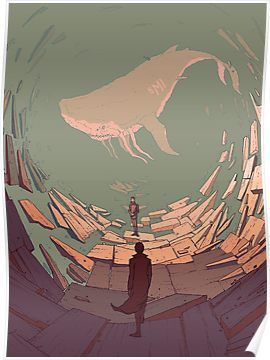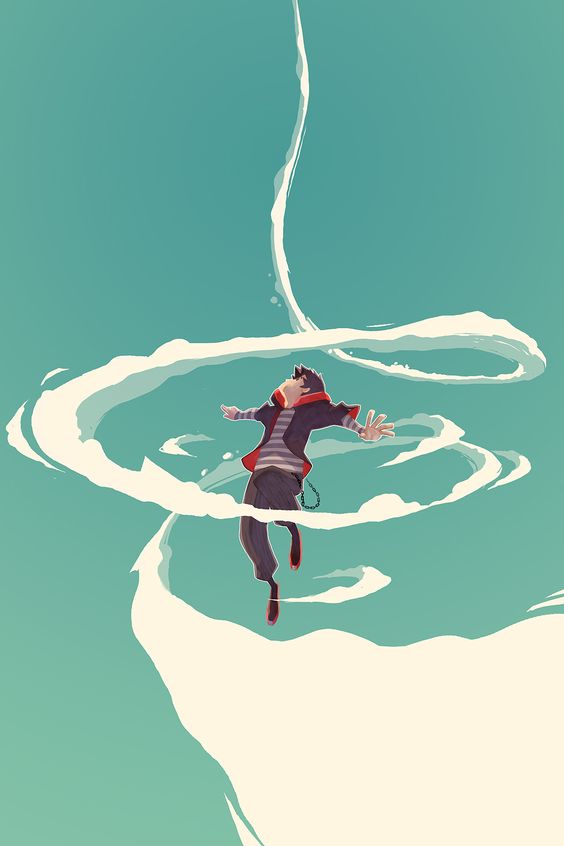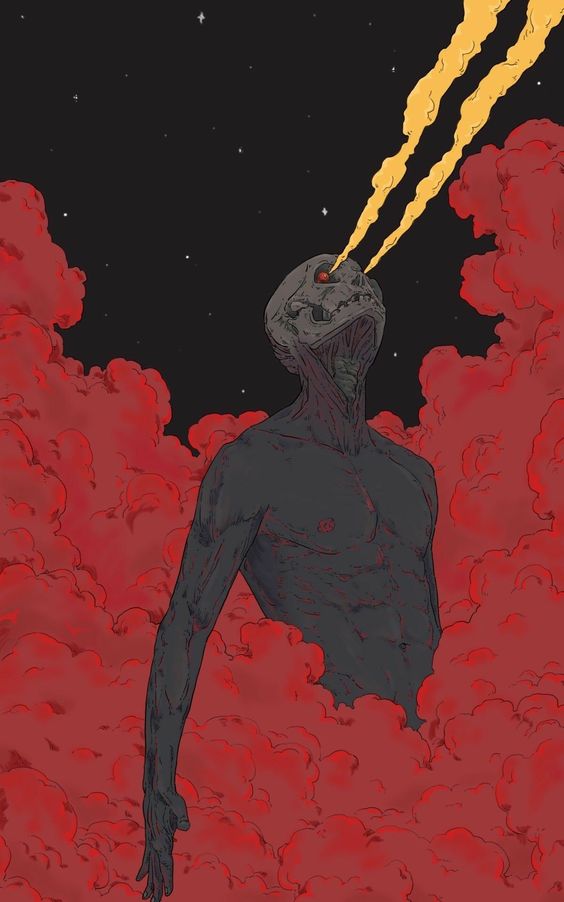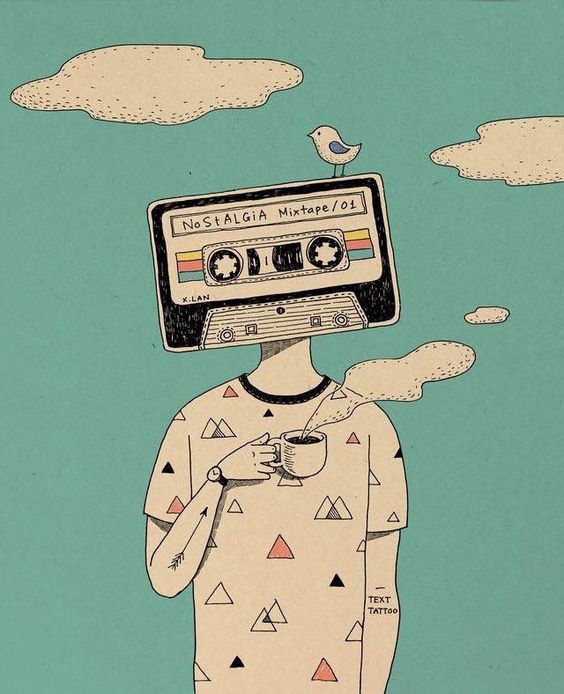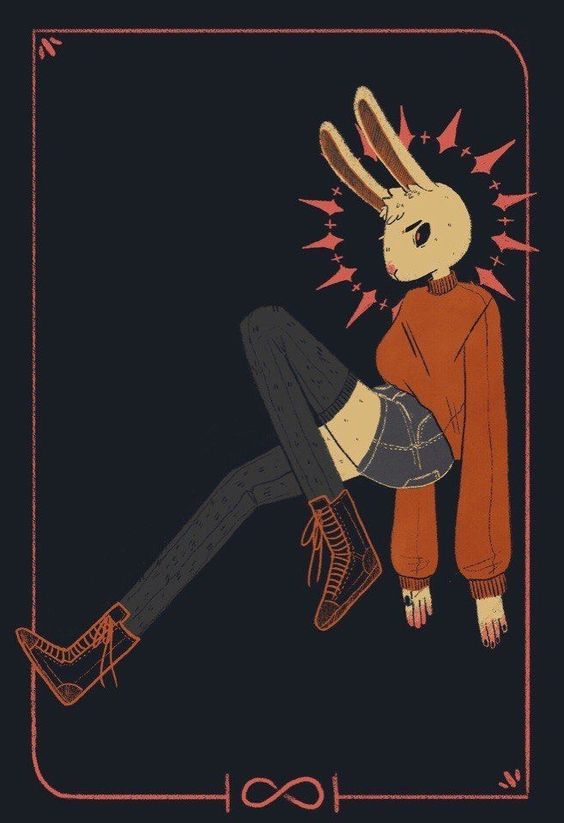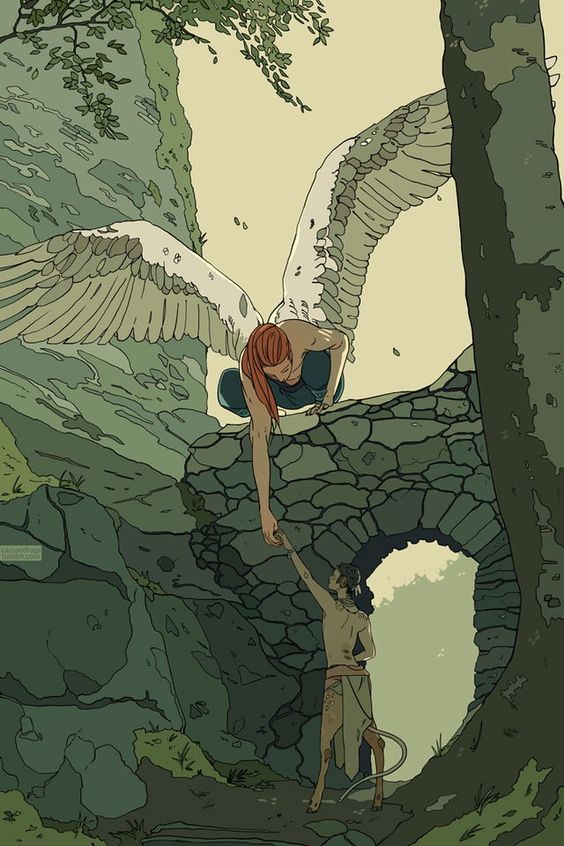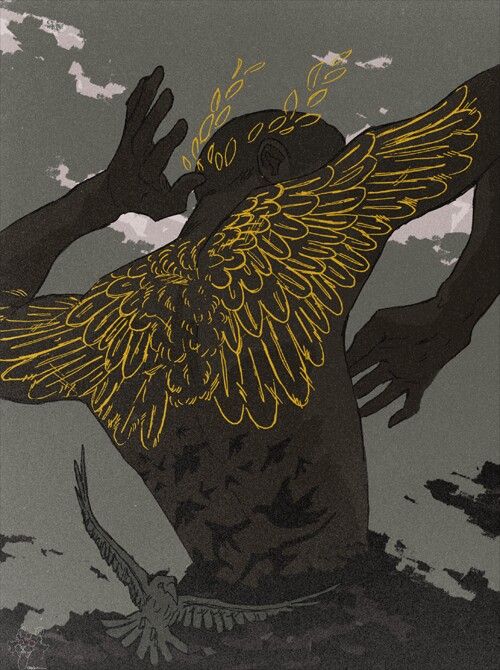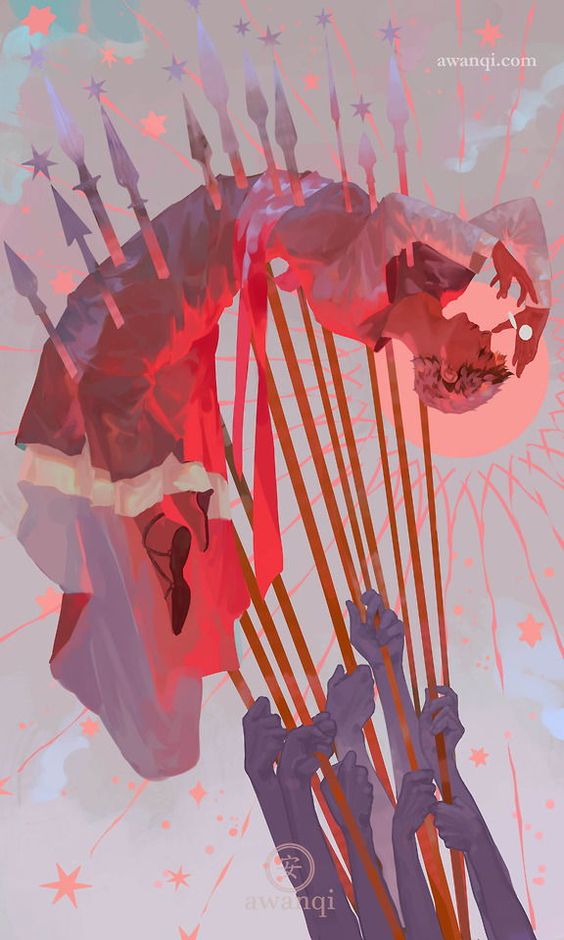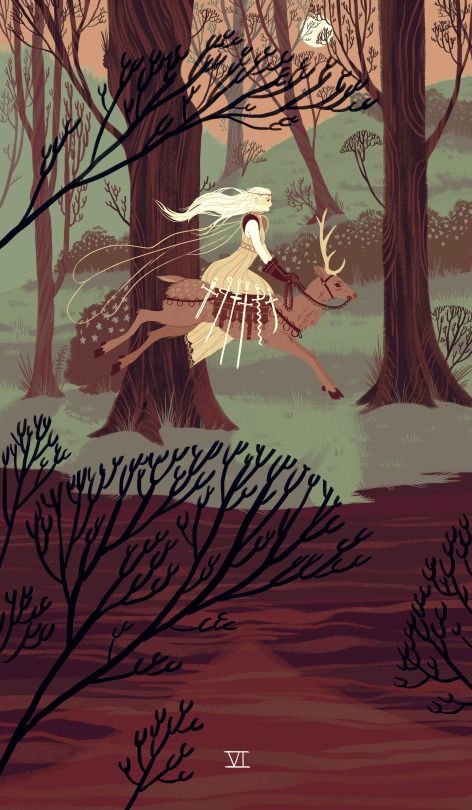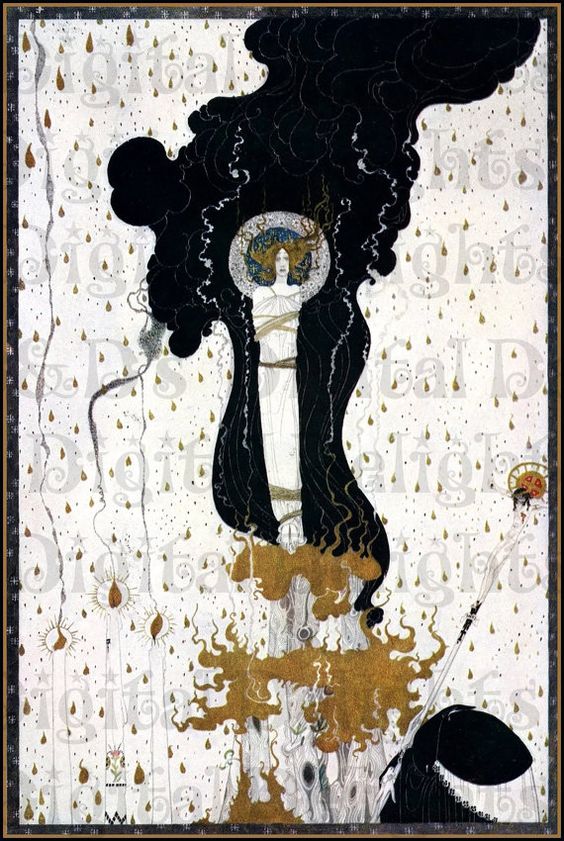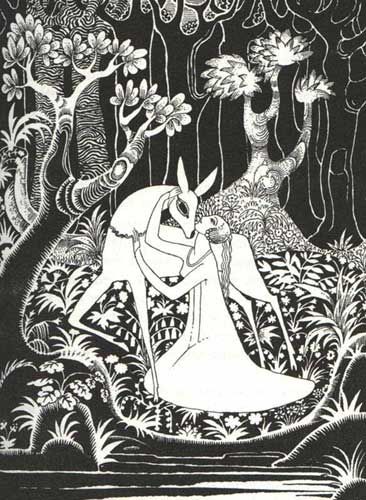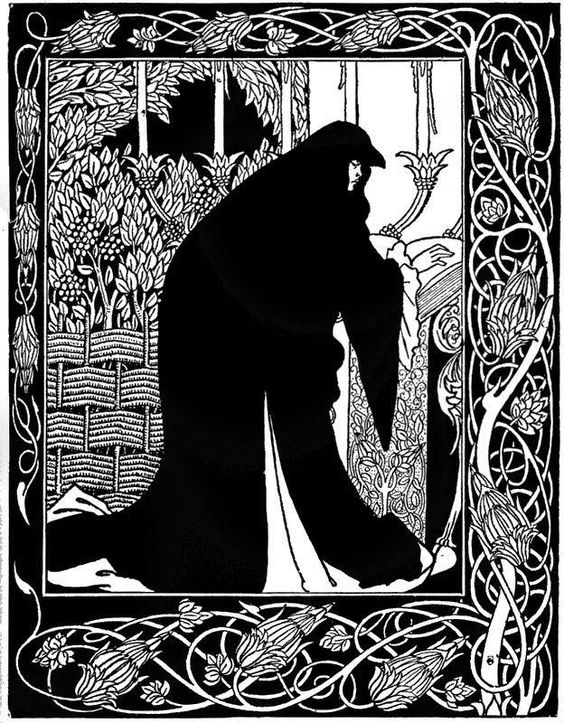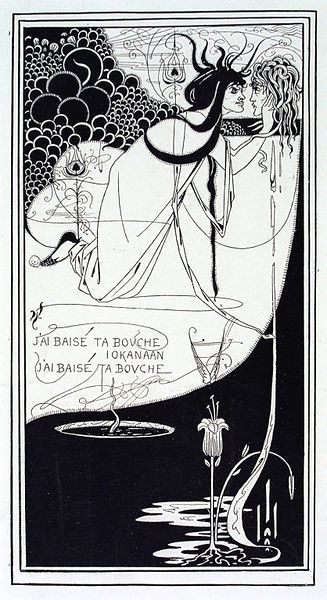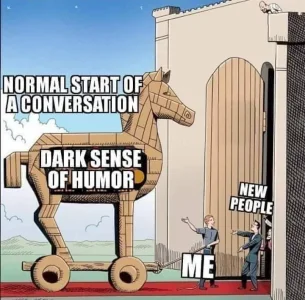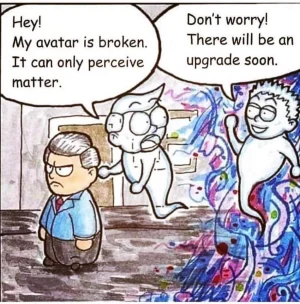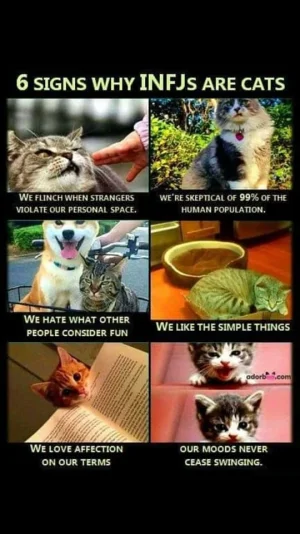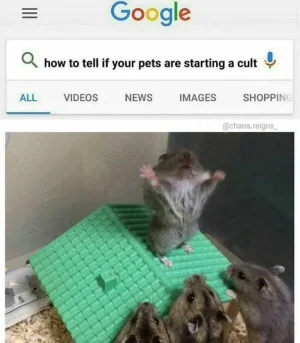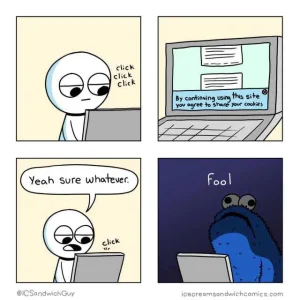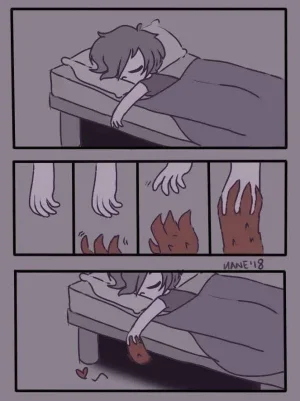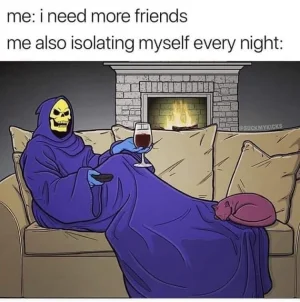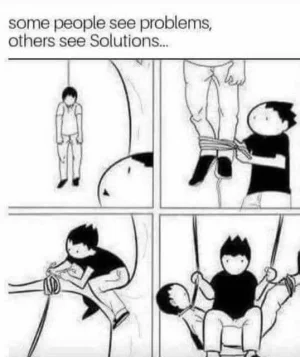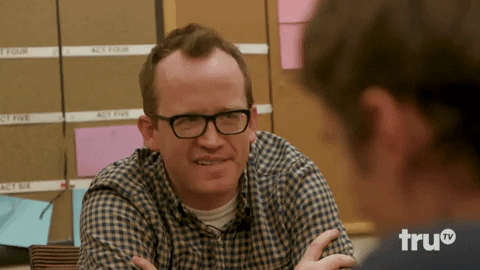You are using an out of date browser. It may not display this or other websites correctly.
You should upgrade or use an alternative browser.
You should upgrade or use an alternative browser.
Merkabah
- Thread starter Skarekrow
- Start date
More options
Who Replied?Skarekrow
~~DEVIL~~
- MBTI
- Ni-INFJ-A
- Enneagram
- Warlock
Hahaha... @Wyote @sprinkles
You’ll have to try this one out and let me know your gaming opinion, lol.
You’ll have to try this one out and let me know your gaming opinion, lol.
Skarekrow
~~DEVIL~~
- MBTI
- Ni-INFJ-A
- Enneagram
- Warlock
Some very fascinating theories and thoughts from some very smart folks regarding “Free Will”.
What say you??
Hmmmmm....?
Enjoy!
Kriben Pillay asked:
There appears to be two schools of thought relative to the issue of free will.
One is like J. Krishnamurti's, which implies we have a kind of free will which we can use to break through delusion, and the other is like Balsekar's, which says there is no free will and that all is pre-determined, even the desire to break through.
Somehow, my gut instinct tells me that Life is a like an improvisation rather than being a fixed script, and while I once had a powerful experience of being lived by Life, it still felt like an improvisation, a potential rather than a fixed plan.
This also accords with quantum physics.
What is your view of this issue?
Panelists:
Greg Goode
Gene Poole
Dan Berkow
Jan Barendrecht
Miguel-Angel Carrasco
Andrew Macnab
Marcia Paul
Michael Read
Phil Burton
Larry Biddenger
Jan Koehoorn
Hans Deunhouwer
Melody Anderson
Manchine
Ed Arrons
Tim Gerchmez
Jody Radzik
Greg Goode
The question of free will is from the perspective of the person. Does the person have free will? Many of the person's actions are forced or determined by factors over which it has no control. Some of these actions are accompanied by the feeling of being lived, of being in the flow, in the "zone." People often count these as the best times. But are at least some of the person's decisions and actions freely chosen? To establish free will, as is discussed in Philosophy 101 classes everywhere, it is not necessary to show that every action is free. Even one free action would be sufficient.
Case 1: "Will that be coffee or tea?" "Hmmm, let me think.... I'll have tea, thanks."
Case 2: (Thought bubble rising "I'd love to take a walk in the beautiful woods. I'd like to surround myself with peace and serenity and inquire into my true nature." (Putting on hiking boots, opening the camper door and stepping out), "Here I go."
"I'd love to take a walk in the beautiful woods. I'd like to surround myself with peace and serenity and inquire into my true nature." (Putting on hiking boots, opening the camper door and stepping out), "Here I go."
From the perspective of the person, if the decision process is not analyzed, the actions and decisions in both cases above seem to be perfect examples of free will. Upon analysis however, a free action and a free chooser cannot be found. A thought comes, followed by a desire, followed by a decision, followed by an action. Tracing backwards, the action is controlled by the decision, the decision is controlled by the desire, the desire is prompted by the thought. The thought arises spontaneously, itself unbidden, un-asked-for, unchosen. First the thought is not there, then it is. Nowhere in this process can a free will be found. Nowhere can a freely-acting chooser be found.
It is even too much to say that the actions, decisions, desires and thoughts can control or prompt each other. These cause-and-effect dynamics are not even observed. Rather, they arise as inferences and conclusions about what happened, that is, they arise as thoughts that rise and fall.
In something like Case 1, the decision might even be accompanied by a small feeling of freedom, lightness, and spaciousness. And maybe also accompanied by a thought, "I'm choosing tea but I could freely choose coffee instead." But the feeling of freedom and the thought "I could" also arise unbidden. That is, the feeling of freedom is not freely chosen.
The person is not the locus of freedom.
The person and the rest of the world cannot be found apart from the awareness in which all things appear. The person, the mind, body and world arise as thoughts, feelings, and sensations. These are nothing other than objects in awareness, and are nothing other than awareness itself. The person does not experience; the person is experienced. As awareness, we are That to which these objects appear. Thoughts, feelings, sensations - these objects arise from the background of silent awareness, they subsist in awareness, and they slip back into awareness. The awareness in which they appear is not itself an object but the background of all objects. It is our true nature. But the objects come and go unbidden, without autonomy. They are powerless and cannot do anything on their own. Objects cannot possess or contain freedom.
Is there freedom?
The silent awareness in which all objects appear is the true nature of all things. Awareness says YES to everything. Even if a NO arises, awareness says YES to the NO. Awareness is without resistance, without limits or edges, without refusal and without obstruction. Awareness is not free, it is freedom itself. What we truly are is not the person but this awareness, this freedom.
The person wants to co-opt this freedom, to own it, to behold it, to be present to use and enjoy it. But in spite of this desire from the perspective of the person, the person can never own That in which the person appears.
What about teachings that emphasize free will?
Entire religions and ethical systems are based on this idea. Ramana Maharshi told a questioner that all actions are determined except the ability to inquire into one's true nature. Isn't Case 2 above different from Case 1?
Sometimes teachings and exhortations about personal freedom are a beautiful, effective and necessary step for freedom from the idea of being a person. A person who prematurely adopts a "no-free-will" teaching can lapse into depression and antinomian behavior. "You have to be someone before you can be no one." The teachings on free will borrow from the freedom that we are. Among the many objects that arise in the mirror of awareness, some objects arise as images of mirrors. These images are taken as representations of their source. Like a mirror appearing in a mirror, Ramana's teaching serves as a pointer to freedom. Case 2 is not different in this respect from Case 1. As objects, all cases and their characters, and all teachings and all discourse (even this one!) are not themselves free or self-powered, but they arise from freedom and consist in freedom.
The person is never free. As awareness, we are never bound.
Gene Poole
If I move beyond the question being about 'feelings', 'Instincts' and move into the realm of 'pure reason' (and don't say I Kant... ), this is what remains:
Our exercise of "will" seems to be consistently geared toward self-limitation. It is within this constantly enforced field of self-limitation that the question of 'free will' occurs. Without exercising our "will" in the service of self-limitation, the uses of "will" are quite apparent.
The exercise of "Will" in the service of self-limitation can be seen clearly, in the human talent of the deferral of pain. From a Darwinian point of view, humans who could fight, run, or otherwise act to survive while _in pain_, are those survivors from whom we have inherited our genes.
As masters of deferral of pain, we are by extension, also masters of deferral of embarrassment; we are able to confabulate 'alternative realities' for the purpose of remaining in the comfort of our own delusions. Our various cultures conspire within themselves, and with each-other, to maintain this allowance for extraordinary confabulation.
It is ironic that what is a powerful talent for survival, can also be used to deny reality. On the other hand, the denial of mortality, the very delusion of it, can serve to lead cultural heros into battles of tribal and cultural preservation; it is hard to argue (logically) against conquest as a means of
survival.
Unfortunately (or perhaps fortunately), each culture has evolved a unique 'religion', each of which has become the touchstone of the reality of the respective culture. The clashes, conflicts, and wars which have arisen around religion, indicate the sacrifice which humans are willing to make, in order to
maintain what is certainly and purely confabulation.
If the "script" is "fixed", it is 'fixed' in the same way that professional wrestling is 'fixed'. Human interactions are either manifested through self-limitation, or not. It takes only one human who acts in the non-self-limited way, to send shockwaves through all cultures, both present and future. The 'fixing of the script' calls for naming any of non-self-limited human to be 'abnormal and dangerous to the status-quo', thus to preserve the privilege (cultural tradition) to indulge in group-confabulations of 'reality as revealed by messengers of the divine'.
Currently, most humans subscribe to what amounts to a 'religion of self-limitation'. It is those who have seen a glimmer of what could happen if self-limitation were an option, rather than a 'divinely enforced duty', who dare question the reality or uses of "will". Proper and ethical uses of 'will' do not transcend humanity, rather, such uses are manifestations of what can eventually become a 'choiceless compassion'.
Those humans who have, or are, advocating the correct uses of 'will', are by no mere coincidence, also known as compassionate humans. Empathic knowing of our human commonality can lead to a mass-migration of humans away from the mandatory religion of self-limitation; this involves the withdrawal of our projections of 'divinity' from a mythical 'other', and the acceptance of personal responsibility for the correct use of 'will'. No longer would humans be burdened with the 'will' of a capricious 'god'; instead, human activities would be considered carefully before execution.
Leaving behind the culturally-enforced mandate of self-limitation, allows the sudden and spontaneous perfection of the human. In that brilliant perfection, all self-limiting ideas and traditions are clearly seen, including the entire category of self-limiting assumptions of 'ego' and 'ignorance', both of which are now being used as sly excuses for self-limitation. Any individual who dares allow the spontaneous perfection of the human to occur, moves beyond the fears which mandate hiding within apparently eternal conundrums such as the 'question of free will'. Bereft of any such camouflage, the perfected human is free to choose.
Dan Berkow
Trying to find the best conclusion arrived at by one or another supposed school of thought is like trying to choose the best color to dye your hair. It leaves out the option of naturally being without trying to conclude anything.
Life is moving, moving, moving and who is trying to catch the right view?
Life is still, still, still and who is it who is thinking to make the right move?
Jan Barendrecht
There is a perspective that could be satisfactory for both the proponents of free will and its adversaries. There have been several experiments with identical twins who were raised under very different circumstances and surprisingly, their development was remarkably similar. To arrive at such a similar position when relative conditions are almost opposites, could be explained as exercising a free will, whereas the fact that despite these sometimes opposite conditions they nevertheless "achieved" a similar position, could be explained as destiny.
But the "governing principle" has to be seen in the germination of tendencies (vasanas) that cannot be suppressed in any way; whatever the societal resistance, these "seeds" will germinate and flower by themselves, whenever the "soil" is fertile. It is easy to see that the feeling of hunger with the subsequent "desire" to eat is such a tendency that is rooted very deeply and although it can be made to shut up during a fast, in the course of events it will return in a way that cannot possibly be ignored (unless one stops drinking as well, which is a more or less painless way of euthanasia for Jain monks). Therefore, it is safe to call the mind a wishing tree: any sincere wish, once done, will in the course of events automatically be executed and there is no escape from it. What is called "free will" is but the "work" to fulfill this wish. An idealist, not knowing "how (s)he ticks" can be quite convinced of having an "iron" will to achieve the goal, as probably will the onlookers.
Of course the above goes for ajnanis, for whom separation is "real" and their sincere wishes are always fulfilled, be it one never knows "when" - it is the origin of prayer...
http://www.nonduality.com/freew.htm#top
Miguel-Angel Carrasco
I'm curious to know where J.Krishnamurti states there's free will.
The issue of free will is usually raised in connection with that of predeterminism or fate: either there is a fixed plan or script that predetermines our actions, or we are really free to choose. Thus put, the issue cannot be solved, as it is impossible to prove the non-existence of an eternal plan, even if such a plan does not exist.
The issue should rather be considered in the context of causal determinism: whether or not we are determined by conscious or unconscious reasons and emotions.
From a scientific point of view, the question either is not raised, because free will appears only as a subjective feeling and never as a verifiable fact; or should be answered in favour of determinism, because there is no verifiable evidence that any personal decision is not a reaction to prevailing circumstances, an automatic response to biochemical reactions in the brain.
From a philosophical point of view, the issue of free will depends on what kind of weltanschauung (ideology o conception of the world) is assumed. For all materialists, who consider the mind to be a function of the brain, there can be no free will. Only if the minds or the souls are independent entities is it possible to assert their freedom, whereas if they are mere processes or functions of the body no such freedom is possible.
The decisive question, thus, is whether the soul is a separate, independent entity. For a dualist philosopher, it is. But then he has to face the problem of how to explain the interaction between body and soul: if the soul is a separate substance, an entity which does not depend on the body, then how is one to account for the remarkable effects of physical conditions on the soul's reactions, or inversely how is one to explain the supposed control of the soul over the body?
For a nondualist, who sustains that everything appears in Consciousness, and that there is only that One Consciousness, there is no such thing as free will, because all individual body-minds are not real entities, but mere appearances without substance. Where there is no real doer, there cannot be a free will.
What regards Consciousness Itself, being the only and ultimate subject, It is not an object. It is thus free of attributes or qualities. It is free of action, free of decisions, free of choices, free of will. It is pure Freedom.
http://www.nonduality.com/freew.htm#top
Andrew Macnab
Does it make any difference whether you or I think there is free will or not? Does it have any practical effect on the living of life? Are the two points of view incompatible or simply the result of different perspectives. Perhaps it is my destiny to work out my own salvation and that of the world with diligence, or my free will to think of all as predestined. One urging a wilful effort to break through and another urging understanding of destiny are not opposite each other, they are speaking to different points of view.
From the point of view of the individual, who sees himself as one of a multitude of sentient beings, there could be free will, that the course of life follows from decisions made, or there could be cause and effect, karmic destiny, or some mixture of these two.
From a deistic nondual point of view, there is one will, all is God(or whatever you wish to call It), so how could there be any other will but the will of God.
Finally, from no point of view, what could be called the nondual nondeistic nonpoint of nonview, which is not no point of view as opposed to a point of view, but simply the absence of formulation of point of view, or of anyone to take a point of view, there being no point to view from and no thing to view, there is no question, no thing that has any attribute like the name of God, nor is there will, nor is there destiny.
Another point about the free will vs destiny question is that it assumes a conventional view of time, of events following one after another, possible causation. If the world is understood as mutual co-arising of phenomena in eternal now moment, the question does not occur.
http://www.nonduality.com/freew.htm#top
Marcia Paul
To ask a question based on an either/or framework is a dual question. The nondual position is not either/or but both. We both have the possibility of free will and are predetermined. In a performance on a stage there are actors, a director, and an audience. The actors follow a script, the director has more freedom but is still bound by both what the actors are capable of doing and what the audience wants as well as the constraints of money, time and so forth, but the audience is free to sit back and enjoy it all.
http://www.nonduality.com/freew.htm#top
Michael Read
Who Dares to Ask? I created space and all dimensions, realities and beings.
I animated them with Myself.
Nothing else would do.
There was nothing else but Me.
The Mystery of You and I!
Do enjoy it!
Make choices if that is your will.
Follow your destiny if you can find it.
Live as if there is no tomorrow!
The only goal is to be alive.
Open your heart to the treasure that is Me that is You.
We are One. Do you believe this? Too bad.
Do you deny this? Too bad.
Poor Baby wants it all!
Oh, what will you do?
There is nothing else but Me.
Understand?
HAHAHAH and HOHOHO!
http://www.nonduality.com/freew.htm#top
Phil Burton
"Will" is usually spoken of in the sense of a force which determines a supposed future. In other words, I *will* continue thinking and typing until the e-mail is complete and sent. It implies the personal subject as the agent of something to be done. It is an interpretation. But I cannot find anything in this moment which corresponds to that meaning. In clear perception, things appear and disappear -- there is no evidence of any will which determines things, just the appearing and disappearing.
In another take, concepts and interpretations of "will" are results of mechanical causation, and therefore invalidate themselves. A need arises to " make sense" of things, and the concept comes to be. Thought itself is a force of nature, and is unwilled.
http://www.nonduality.com/freew.htm#top
Larry Biddenger
In the face of overwhelming negativity and determinism I say YES, there is free will. Assuming that all will is free will, I looked it up in my dictionary and it said:
will (wil) 1, the faculty of conscious and deliberate action; volition. 2, desire; choice; pleasure. 3, purpose; determination....
As far as I am concerned, everything that is in the dictionary (plus a lot more besides) _exists_. Everyone seems to be poopooing phenomenality as ~ merely ~ illusory. But this illusion is the rock of the ages and the warp and weft of all value. All these qualities in the definition of will are virtues and should be celebrated instead of denied. "No free will" is just a pointer pointing at witness consciousness.
http://www.nonduality.com/freew.htm#top
Jan Koehoorn
If there was such a thing as free will, everybody would be happy.
http://www.nonduality.com/freew.htm#top
Melody Anderson
It depends on which 'I'/eye I'm looking through. Looking thru the eye of ego, freewill is a given. If not for freewill, the ego would atrophy for lack of use!
Looking thru the eye of Self, the idea of freewill is rather amusing.
Free of what? As Self, what IS there to be free of?
Here's a recent example of what I suggest above:
This week I was not scheduled to work anywhere, and my son was spending the week with my dad.
Thru free will, I had planned a week of introspection .....looking forward to a quiet week of being alone ....for the expressed purpose of "aligning with God's will" for me.
But then my dad called the very first evening away, saying he was bringing the kids back to town for youth night at church....and to say he would be stopping by for a 2 hour visit while waiting for the kids.
And then my sister called saying she was going to be in town the next day and wouldn't I like to do some shopping, and have lunch and stuff....since both our kid's are at my dads?
And then I was asked to help an acquaintance of mine with some computer and bookkeeping problems he was having.
And then a lady called asking me to decorate her daughter's birthday party on Saturday.
This all arose within a 12 hour period!
At first I was so angry....felt intruded upon. I certainly (from my ego 'eye' ) had free will to tell them 'no' and be left alone so I could "be One with God".
But when I stepped back....and looked thru the eye which sees the bigger picture, I could see not only the invitations that arose all of a sudden, but I could see the 'teachings' I've been given these past days superimposed over them.
I have shared these past few days, both here and elsewhere, how I've been given to see that my reclusiveness these past years has been a 'hiding' of sorts from relationships.
I've been given to see, just thru my conversations on and off list how they synchronistically (and powerfully!) tied with my readings of Osho, revealing to me how I have been avoiding not only the pain of relationships, but the challenge of them.
I've been given to see how narcissistic I have become in my reclusiveness.
So when I see the marriage here of 'teaching' and 'opportunity', I can see how the question of freewill can seemingly be answered both ways.
I can see that the ego can choose to ignore the opportunity and 'movement' presented (and based on experience be sure to be given both the opportunities and the lessons again very soon!).
In other words, I can choose to struggle against the tide, until I'm worn out, or I can simply see how Existence is moving me... and relax into it.
What was interesting to note is that the moment I relaxed into what was unfolding for me the other day, the anger and the crankiness was no more.
http://www.nonduality.com/freew.htm#top
Manchine
Yesterday I had planned to write about free will and destiny.
Well, here I am. Destiny unfolded, or more correctly is unfolding, minute by minute, second by second... instant by instant.
So I am here, that is fact. Can't change that. Oh, it is true that I can change the "content" of destiny, even if I sit here like a bump on a log and "do" nothing. What I think, changes how it looks for me. I could have decided not to write today after all. If I had not, I would have changed what I had intended destiny to be, however destiny itself, was destined to be exactly what it finally ends up being.
Destiny exists ultimately in the NOW. Any past event is written firmly, any future event is also written. We just don't know what it will be. We can say that it turned out to be distinct from what we guessed it would be. We can change what it will be "at will", but we are actually only changing what it was predicted to be. It finally is what it is.
What does that say about free will however? What a beautiful balance these two things have. Sort of like a conscious structure ever in balance.
I cannot change what "will be", but what "will be" is what I make it. How far can this go? What are my limitations in will?
Could it be, that the strongest will wins? Some higher will, may determine that my "time" is up for instance. There's not much I can do about that! Something more down to earth; I could decide to make a million bucks! You just have to go and do it! I've tried to do it a couple of times. It's not easy, I came upon some life`s decisions that I wasn't willing to compromise, so I chose those over the million bucks.
But actually it's a lot more subtle than that. Destiny plays instant by instant. The decisions that effect "will" are made instant by instant, and as such each decision is a much smaller and seemingly less important decision. A rapid, almost automatic response to some stimulus, the decision made without considering how it will affect the others that unfold. If one really looks at this, these small instant by instant decisions are very important and very powerful if one is "in condition" to perceive them without being destracted by the condition of the moment.
The condition of the moment... What is that? It's how I perceive things. It's been shown time and again that when two people are looking at the same thing, what they see is almost always distinct. Sometimes sharply, as in a robbery for instance. Sometimes much more subtly, as in two lovers wathching a sunset.
But i's more than that. The "condition of the moment", has an extremely powerful hold over our existence. It is what controls our existence. We see so many things that we cannot control. The color of the leaves for instance, gravity, why life itself is accepted as a given, although, if you really think about it, how can it be? Why is it that there is anything, instead of nothing at all?
OK, I wouldn't walk off the nearest cliff, as a matter of testing my will against, what would that be, the will of "nature"? But if I am aware in a detailed manner of the condition of the moment, and if I try not to let my "imagination" modify what I am seeing, I should have much more success in excersising my will.
I have done a lot of work, looking at the edges of consciousness, looking at where consciousness disappears. Each new discovery moves the boundry. Dreams become more lucid, life becomes more like a lucid dream. In the end there is one big lucid dream or nothing at all. In a timeless world, the two become one.
Go figure. Anyways, in this world, a lot more is possible than one can imagine.
Destiny happens, against any will, but what we make of it is up to us.
http://www.nonduality.com/freew.htm#top
Ed Arrons
Looking for free will, it appears only in the "not-me". Yet in most actions, will located in "me" appears to be the initiator. This can be described as a *sense* of will resulting from the shift in consciousness of the observer looking outward to the object of the action.
http://www.nonduality.com/freew.htm#top
What say you??
Hmmmmm....?
Enjoy!
Nonduality and Free Will

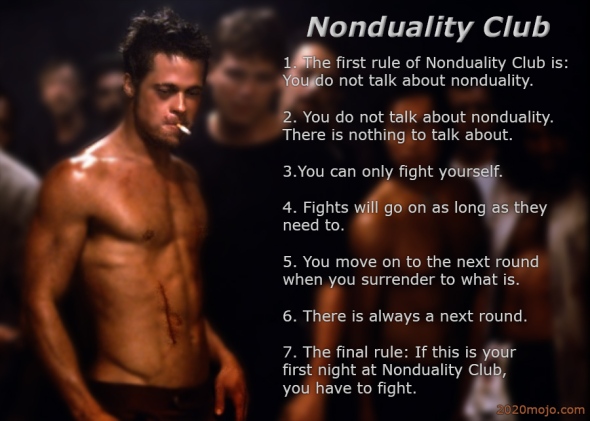
Kriben Pillay asked:
There appears to be two schools of thought relative to the issue of free will.
One is like J. Krishnamurti's, which implies we have a kind of free will which we can use to break through delusion, and the other is like Balsekar's, which says there is no free will and that all is pre-determined, even the desire to break through.
Somehow, my gut instinct tells me that Life is a like an improvisation rather than being a fixed script, and while I once had a powerful experience of being lived by Life, it still felt like an improvisation, a potential rather than a fixed plan.
This also accords with quantum physics.
What is your view of this issue?
Panelists:
Greg Goode
Gene Poole
Dan Berkow
Jan Barendrecht
Miguel-Angel Carrasco
Andrew Macnab
Marcia Paul
Michael Read
Phil Burton
Larry Biddenger
Jan Koehoorn
Hans Deunhouwer
Melody Anderson
Manchine
Ed Arrons
Tim Gerchmez
Jody Radzik
Greg Goode
The question of free will is from the perspective of the person. Does the person have free will? Many of the person's actions are forced or determined by factors over which it has no control. Some of these actions are accompanied by the feeling of being lived, of being in the flow, in the "zone." People often count these as the best times. But are at least some of the person's decisions and actions freely chosen? To establish free will, as is discussed in Philosophy 101 classes everywhere, it is not necessary to show that every action is free. Even one free action would be sufficient.
Case 1: "Will that be coffee or tea?" "Hmmm, let me think.... I'll have tea, thanks."
Case 2: (Thought bubble rising
From the perspective of the person, if the decision process is not analyzed, the actions and decisions in both cases above seem to be perfect examples of free will. Upon analysis however, a free action and a free chooser cannot be found. A thought comes, followed by a desire, followed by a decision, followed by an action. Tracing backwards, the action is controlled by the decision, the decision is controlled by the desire, the desire is prompted by the thought. The thought arises spontaneously, itself unbidden, un-asked-for, unchosen. First the thought is not there, then it is. Nowhere in this process can a free will be found. Nowhere can a freely-acting chooser be found.
It is even too much to say that the actions, decisions, desires and thoughts can control or prompt each other. These cause-and-effect dynamics are not even observed. Rather, they arise as inferences and conclusions about what happened, that is, they arise as thoughts that rise and fall.
In something like Case 1, the decision might even be accompanied by a small feeling of freedom, lightness, and spaciousness. And maybe also accompanied by a thought, "I'm choosing tea but I could freely choose coffee instead." But the feeling of freedom and the thought "I could" also arise unbidden. That is, the feeling of freedom is not freely chosen.
The person is not the locus of freedom.
The person and the rest of the world cannot be found apart from the awareness in which all things appear. The person, the mind, body and world arise as thoughts, feelings, and sensations. These are nothing other than objects in awareness, and are nothing other than awareness itself. The person does not experience; the person is experienced. As awareness, we are That to which these objects appear. Thoughts, feelings, sensations - these objects arise from the background of silent awareness, they subsist in awareness, and they slip back into awareness. The awareness in which they appear is not itself an object but the background of all objects. It is our true nature. But the objects come and go unbidden, without autonomy. They are powerless and cannot do anything on their own. Objects cannot possess or contain freedom.
Is there freedom?
The silent awareness in which all objects appear is the true nature of all things. Awareness says YES to everything. Even if a NO arises, awareness says YES to the NO. Awareness is without resistance, without limits or edges, without refusal and without obstruction. Awareness is not free, it is freedom itself. What we truly are is not the person but this awareness, this freedom.
The person wants to co-opt this freedom, to own it, to behold it, to be present to use and enjoy it. But in spite of this desire from the perspective of the person, the person can never own That in which the person appears.
What about teachings that emphasize free will?
Entire religions and ethical systems are based on this idea. Ramana Maharshi told a questioner that all actions are determined except the ability to inquire into one's true nature. Isn't Case 2 above different from Case 1?
Sometimes teachings and exhortations about personal freedom are a beautiful, effective and necessary step for freedom from the idea of being a person. A person who prematurely adopts a "no-free-will" teaching can lapse into depression and antinomian behavior. "You have to be someone before you can be no one." The teachings on free will borrow from the freedom that we are. Among the many objects that arise in the mirror of awareness, some objects arise as images of mirrors. These images are taken as representations of their source. Like a mirror appearing in a mirror, Ramana's teaching serves as a pointer to freedom. Case 2 is not different in this respect from Case 1. As objects, all cases and their characters, and all teachings and all discourse (even this one!) are not themselves free or self-powered, but they arise from freedom and consist in freedom.
The person is never free. As awareness, we are never bound.
Gene Poole
If I move beyond the question being about 'feelings', 'Instincts' and move into the realm of 'pure reason' (and don't say I Kant... ), this is what remains:
Our exercise of "will" seems to be consistently geared toward self-limitation. It is within this constantly enforced field of self-limitation that the question of 'free will' occurs. Without exercising our "will" in the service of self-limitation, the uses of "will" are quite apparent.
The exercise of "Will" in the service of self-limitation can be seen clearly, in the human talent of the deferral of pain. From a Darwinian point of view, humans who could fight, run, or otherwise act to survive while _in pain_, are those survivors from whom we have inherited our genes.
As masters of deferral of pain, we are by extension, also masters of deferral of embarrassment; we are able to confabulate 'alternative realities' for the purpose of remaining in the comfort of our own delusions. Our various cultures conspire within themselves, and with each-other, to maintain this allowance for extraordinary confabulation.
It is ironic that what is a powerful talent for survival, can also be used to deny reality. On the other hand, the denial of mortality, the very delusion of it, can serve to lead cultural heros into battles of tribal and cultural preservation; it is hard to argue (logically) against conquest as a means of
survival.
Unfortunately (or perhaps fortunately), each culture has evolved a unique 'religion', each of which has become the touchstone of the reality of the respective culture. The clashes, conflicts, and wars which have arisen around religion, indicate the sacrifice which humans are willing to make, in order to
maintain what is certainly and purely confabulation.
If the "script" is "fixed", it is 'fixed' in the same way that professional wrestling is 'fixed'. Human interactions are either manifested through self-limitation, or not. It takes only one human who acts in the non-self-limited way, to send shockwaves through all cultures, both present and future. The 'fixing of the script' calls for naming any of non-self-limited human to be 'abnormal and dangerous to the status-quo', thus to preserve the privilege (cultural tradition) to indulge in group-confabulations of 'reality as revealed by messengers of the divine'.
Currently, most humans subscribe to what amounts to a 'religion of self-limitation'. It is those who have seen a glimmer of what could happen if self-limitation were an option, rather than a 'divinely enforced duty', who dare question the reality or uses of "will". Proper and ethical uses of 'will' do not transcend humanity, rather, such uses are manifestations of what can eventually become a 'choiceless compassion'.
Those humans who have, or are, advocating the correct uses of 'will', are by no mere coincidence, also known as compassionate humans. Empathic knowing of our human commonality can lead to a mass-migration of humans away from the mandatory religion of self-limitation; this involves the withdrawal of our projections of 'divinity' from a mythical 'other', and the acceptance of personal responsibility for the correct use of 'will'. No longer would humans be burdened with the 'will' of a capricious 'god'; instead, human activities would be considered carefully before execution.
Leaving behind the culturally-enforced mandate of self-limitation, allows the sudden and spontaneous perfection of the human. In that brilliant perfection, all self-limiting ideas and traditions are clearly seen, including the entire category of self-limiting assumptions of 'ego' and 'ignorance', both of which are now being used as sly excuses for self-limitation. Any individual who dares allow the spontaneous perfection of the human to occur, moves beyond the fears which mandate hiding within apparently eternal conundrums such as the 'question of free will'. Bereft of any such camouflage, the perfected human is free to choose.
Dan Berkow
Trying to find the best conclusion arrived at by one or another supposed school of thought is like trying to choose the best color to dye your hair. It leaves out the option of naturally being without trying to conclude anything.
Life is moving, moving, moving and who is trying to catch the right view?
Life is still, still, still and who is it who is thinking to make the right move?
Jan Barendrecht
There is a perspective that could be satisfactory for both the proponents of free will and its adversaries. There have been several experiments with identical twins who were raised under very different circumstances and surprisingly, their development was remarkably similar. To arrive at such a similar position when relative conditions are almost opposites, could be explained as exercising a free will, whereas the fact that despite these sometimes opposite conditions they nevertheless "achieved" a similar position, could be explained as destiny.
But the "governing principle" has to be seen in the germination of tendencies (vasanas) that cannot be suppressed in any way; whatever the societal resistance, these "seeds" will germinate and flower by themselves, whenever the "soil" is fertile. It is easy to see that the feeling of hunger with the subsequent "desire" to eat is such a tendency that is rooted very deeply and although it can be made to shut up during a fast, in the course of events it will return in a way that cannot possibly be ignored (unless one stops drinking as well, which is a more or less painless way of euthanasia for Jain monks). Therefore, it is safe to call the mind a wishing tree: any sincere wish, once done, will in the course of events automatically be executed and there is no escape from it. What is called "free will" is but the "work" to fulfill this wish. An idealist, not knowing "how (s)he ticks" can be quite convinced of having an "iron" will to achieve the goal, as probably will the onlookers.
Of course the above goes for ajnanis, for whom separation is "real" and their sincere wishes are always fulfilled, be it one never knows "when" - it is the origin of prayer...
http://www.nonduality.com/freew.htm#top
Miguel-Angel Carrasco
I'm curious to know where J.Krishnamurti states there's free will.
The issue of free will is usually raised in connection with that of predeterminism or fate: either there is a fixed plan or script that predetermines our actions, or we are really free to choose. Thus put, the issue cannot be solved, as it is impossible to prove the non-existence of an eternal plan, even if such a plan does not exist.
The issue should rather be considered in the context of causal determinism: whether or not we are determined by conscious or unconscious reasons and emotions.
From a scientific point of view, the question either is not raised, because free will appears only as a subjective feeling and never as a verifiable fact; or should be answered in favour of determinism, because there is no verifiable evidence that any personal decision is not a reaction to prevailing circumstances, an automatic response to biochemical reactions in the brain.
From a philosophical point of view, the issue of free will depends on what kind of weltanschauung (ideology o conception of the world) is assumed. For all materialists, who consider the mind to be a function of the brain, there can be no free will. Only if the minds or the souls are independent entities is it possible to assert their freedom, whereas if they are mere processes or functions of the body no such freedom is possible.
The decisive question, thus, is whether the soul is a separate, independent entity. For a dualist philosopher, it is. But then he has to face the problem of how to explain the interaction between body and soul: if the soul is a separate substance, an entity which does not depend on the body, then how is one to account for the remarkable effects of physical conditions on the soul's reactions, or inversely how is one to explain the supposed control of the soul over the body?
For a nondualist, who sustains that everything appears in Consciousness, and that there is only that One Consciousness, there is no such thing as free will, because all individual body-minds are not real entities, but mere appearances without substance. Where there is no real doer, there cannot be a free will.
What regards Consciousness Itself, being the only and ultimate subject, It is not an object. It is thus free of attributes or qualities. It is free of action, free of decisions, free of choices, free of will. It is pure Freedom.
http://www.nonduality.com/freew.htm#top
Andrew Macnab
Does it make any difference whether you or I think there is free will or not? Does it have any practical effect on the living of life? Are the two points of view incompatible or simply the result of different perspectives. Perhaps it is my destiny to work out my own salvation and that of the world with diligence, or my free will to think of all as predestined. One urging a wilful effort to break through and another urging understanding of destiny are not opposite each other, they are speaking to different points of view.
From the point of view of the individual, who sees himself as one of a multitude of sentient beings, there could be free will, that the course of life follows from decisions made, or there could be cause and effect, karmic destiny, or some mixture of these two.
From a deistic nondual point of view, there is one will, all is God(or whatever you wish to call It), so how could there be any other will but the will of God.
Finally, from no point of view, what could be called the nondual nondeistic nonpoint of nonview, which is not no point of view as opposed to a point of view, but simply the absence of formulation of point of view, or of anyone to take a point of view, there being no point to view from and no thing to view, there is no question, no thing that has any attribute like the name of God, nor is there will, nor is there destiny.
Another point about the free will vs destiny question is that it assumes a conventional view of time, of events following one after another, possible causation. If the world is understood as mutual co-arising of phenomena in eternal now moment, the question does not occur.
http://www.nonduality.com/freew.htm#top
Marcia Paul
To ask a question based on an either/or framework is a dual question. The nondual position is not either/or but both. We both have the possibility of free will and are predetermined. In a performance on a stage there are actors, a director, and an audience. The actors follow a script, the director has more freedom but is still bound by both what the actors are capable of doing and what the audience wants as well as the constraints of money, time and so forth, but the audience is free to sit back and enjoy it all.
http://www.nonduality.com/freew.htm#top
Michael Read
Who Dares to Ask? I created space and all dimensions, realities and beings.
I animated them with Myself.
Nothing else would do.
There was nothing else but Me.
The Mystery of You and I!
Do enjoy it!
Make choices if that is your will.
Follow your destiny if you can find it.
Live as if there is no tomorrow!
The only goal is to be alive.
Open your heart to the treasure that is Me that is You.
We are One. Do you believe this? Too bad.
Do you deny this? Too bad.
Poor Baby wants it all!
Oh, what will you do?
There is nothing else but Me.
Understand?
HAHAHAH and HOHOHO!
http://www.nonduality.com/freew.htm#top
Phil Burton
"Will" is usually spoken of in the sense of a force which determines a supposed future. In other words, I *will* continue thinking and typing until the e-mail is complete and sent. It implies the personal subject as the agent of something to be done. It is an interpretation. But I cannot find anything in this moment which corresponds to that meaning. In clear perception, things appear and disappear -- there is no evidence of any will which determines things, just the appearing and disappearing.
In another take, concepts and interpretations of "will" are results of mechanical causation, and therefore invalidate themselves. A need arises to " make sense" of things, and the concept comes to be. Thought itself is a force of nature, and is unwilled.
http://www.nonduality.com/freew.htm#top
Larry Biddenger
In the face of overwhelming negativity and determinism I say YES, there is free will. Assuming that all will is free will, I looked it up in my dictionary and it said:
will (wil) 1, the faculty of conscious and deliberate action; volition. 2, desire; choice; pleasure. 3, purpose; determination....
As far as I am concerned, everything that is in the dictionary (plus a lot more besides) _exists_. Everyone seems to be poopooing phenomenality as ~ merely ~ illusory. But this illusion is the rock of the ages and the warp and weft of all value. All these qualities in the definition of will are virtues and should be celebrated instead of denied. "No free will" is just a pointer pointing at witness consciousness.
http://www.nonduality.com/freew.htm#top
Jan Koehoorn
If there was such a thing as free will, everybody would be happy.
http://www.nonduality.com/freew.htm#top
Melody Anderson
It depends on which 'I'/eye I'm looking through. Looking thru the eye of ego, freewill is a given. If not for freewill, the ego would atrophy for lack of use!
Looking thru the eye of Self, the idea of freewill is rather amusing.
Free of what? As Self, what IS there to be free of?
Here's a recent example of what I suggest above:
This week I was not scheduled to work anywhere, and my son was spending the week with my dad.
Thru free will, I had planned a week of introspection .....looking forward to a quiet week of being alone ....for the expressed purpose of "aligning with God's will" for me.
But then my dad called the very first evening away, saying he was bringing the kids back to town for youth night at church....and to say he would be stopping by for a 2 hour visit while waiting for the kids.
And then my sister called saying she was going to be in town the next day and wouldn't I like to do some shopping, and have lunch and stuff....since both our kid's are at my dads?
And then I was asked to help an acquaintance of mine with some computer and bookkeeping problems he was having.
And then a lady called asking me to decorate her daughter's birthday party on Saturday.
This all arose within a 12 hour period!
At first I was so angry....felt intruded upon. I certainly (from my ego 'eye' ) had free will to tell them 'no' and be left alone so I could "be One with God".
But when I stepped back....and looked thru the eye which sees the bigger picture, I could see not only the invitations that arose all of a sudden, but I could see the 'teachings' I've been given these past days superimposed over them.
I have shared these past few days, both here and elsewhere, how I've been given to see that my reclusiveness these past years has been a 'hiding' of sorts from relationships.
I've been given to see, just thru my conversations on and off list how they synchronistically (and powerfully!) tied with my readings of Osho, revealing to me how I have been avoiding not only the pain of relationships, but the challenge of them.
I've been given to see how narcissistic I have become in my reclusiveness.
So when I see the marriage here of 'teaching' and 'opportunity', I can see how the question of freewill can seemingly be answered both ways.
I can see that the ego can choose to ignore the opportunity and 'movement' presented (and based on experience be sure to be given both the opportunities and the lessons again very soon!).
In other words, I can choose to struggle against the tide, until I'm worn out, or I can simply see how Existence is moving me... and relax into it.
What was interesting to note is that the moment I relaxed into what was unfolding for me the other day, the anger and the crankiness was no more.
http://www.nonduality.com/freew.htm#top
Manchine
Yesterday I had planned to write about free will and destiny.
Well, here I am. Destiny unfolded, or more correctly is unfolding, minute by minute, second by second... instant by instant.
So I am here, that is fact. Can't change that. Oh, it is true that I can change the "content" of destiny, even if I sit here like a bump on a log and "do" nothing. What I think, changes how it looks for me. I could have decided not to write today after all. If I had not, I would have changed what I had intended destiny to be, however destiny itself, was destined to be exactly what it finally ends up being.
Destiny exists ultimately in the NOW. Any past event is written firmly, any future event is also written. We just don't know what it will be. We can say that it turned out to be distinct from what we guessed it would be. We can change what it will be "at will", but we are actually only changing what it was predicted to be. It finally is what it is.
What does that say about free will however? What a beautiful balance these two things have. Sort of like a conscious structure ever in balance.
I cannot change what "will be", but what "will be" is what I make it. How far can this go? What are my limitations in will?
Could it be, that the strongest will wins? Some higher will, may determine that my "time" is up for instance. There's not much I can do about that! Something more down to earth; I could decide to make a million bucks! You just have to go and do it! I've tried to do it a couple of times. It's not easy, I came upon some life`s decisions that I wasn't willing to compromise, so I chose those over the million bucks.
But actually it's a lot more subtle than that. Destiny plays instant by instant. The decisions that effect "will" are made instant by instant, and as such each decision is a much smaller and seemingly less important decision. A rapid, almost automatic response to some stimulus, the decision made without considering how it will affect the others that unfold. If one really looks at this, these small instant by instant decisions are very important and very powerful if one is "in condition" to perceive them without being destracted by the condition of the moment.
The condition of the moment... What is that? It's how I perceive things. It's been shown time and again that when two people are looking at the same thing, what they see is almost always distinct. Sometimes sharply, as in a robbery for instance. Sometimes much more subtly, as in two lovers wathching a sunset.
But i's more than that. The "condition of the moment", has an extremely powerful hold over our existence. It is what controls our existence. We see so many things that we cannot control. The color of the leaves for instance, gravity, why life itself is accepted as a given, although, if you really think about it, how can it be? Why is it that there is anything, instead of nothing at all?
OK, I wouldn't walk off the nearest cliff, as a matter of testing my will against, what would that be, the will of "nature"? But if I am aware in a detailed manner of the condition of the moment, and if I try not to let my "imagination" modify what I am seeing, I should have much more success in excersising my will.
I have done a lot of work, looking at the edges of consciousness, looking at where consciousness disappears. Each new discovery moves the boundry. Dreams become more lucid, life becomes more like a lucid dream. In the end there is one big lucid dream or nothing at all. In a timeless world, the two become one.
Go figure. Anyways, in this world, a lot more is possible than one can imagine.
Destiny happens, against any will, but what we make of it is up to us.
http://www.nonduality.com/freew.htm#top
Ed Arrons
Looking for free will, it appears only in the "not-me". Yet in most actions, will located in "me" appears to be the initiator. This can be described as a *sense* of will resulting from the shift in consciousness of the observer looking outward to the object of the action.
http://www.nonduality.com/freew.htm#top
Skarekrow
~~DEVIL~~
- MBTI
- Ni-INFJ-A
- Enneagram
- Warlock
Was discussing this recently...
Qigong (pronounced: chee-gun), which combines meditative and physically active elements, is the basic exercise system within Chinese medicine. Qigong exercises are designed to help you preserve your Jing, strengthen and balance the flow of Qi energy, and enlighten your Shen.

Its dynamic exercises and meditations have Yin and Yang aspects: The Yin is being it; the Yang is doing it.
Yin qigong exercises are expressed through relaxed stretching, visualization, and breathing.
Yang qigong exercises are expressed in a more aerobic or dynamic way.
They are particularly effective for supporting the immune system. In China, Qigong is used extensively for people with cancer.
Qigong’s physical and spiritual routines move Qi energy through the Twelve Primary Channels and Eight Extra Channels, balancing it, smoothing the flow, and strengthening it.
Chinese medicine uses Qigong exercises to maintain health, prevent illness, and extend longevity because it is a powerful tool for maintaining and restoring harmony to the Organ Systems, Essential Substances, and Channels.
Qigong is also used for non-medical purposes, such as for fighting and for pursuing enlightenment.
Anyone of any age or physical condition can do Qigong.
You don’t have to be able to run a marathon or bench press a car to pursue healthfulness and enjoy the benefits.
When you design your qigong exercise / meditation practice, you will pick what suits your individual constitution.
Some of us are born with one type of constitution; some with another.
We each have inherited imbalances that we cannot control but with which we must work.
That’s why for some people it is easier to achieve balance and strength than it is for others.
But whatever your nature, Qigong can help you become the most balanced you can be.
Qigong is truly a system for a lifetime.
That’s why so many people over age sixty in China practice Qigong and Tai Chi.
The effects may be powerful, but the routines themselves are usually gentle.
Even the dynamic exercises—some of which explode the Qi energy— use forcefulness in different ways than in the West.
The following are some effects of Qigong exercises practiced regularly.

Maintaining Health
Qigong exercises help maintain health by creating a state of mental and physical calmness, which indicates that the Qi energy is balanced and harmonious.
This allows the mind/body/spirit to function most efficiently, with the least amount of stress.
When you start practicing Qigong exercises, the primary goal is to concentrate on letting go, letting go, letting go.
That’s because most imbalance comes from holding on to too much for too long.
Most of us are familiar with physical strength of muscles, and when we think about exercising, we think in terms of tensing muscles.
Qi energy is different.
Qi strength is revealed by a smooth, calm, concentrated effort that is free of stress and does not pit one part of the body against another.

Managing Illness
It’s harder to remedy an illness than to prevent it, and Qigong has powerful preventive effects.
However, when disharmony becomes apparent, Qigong exercises also can play a crucial role in restoring harmony.
Qigong movement and postures are shaped by the principle of Yin/Yang: the complementary interrelationship of qualities such as fast and slow, hard and soft, Excess or Deficiency, and External and Internal.
Qigong exercises use these contrasting and complementary qualities to restore harmony to the Essential Substances, Organ Systems, and Channels.
Extending Longevity
In China, the use of Qigong exercises for maintaining health and curing illness did not satisfy those Buddhists and Daoists who engaged in more rigorous self-discipline.
They wanted to be able to amplify the power of Qi energy and make the internal Organ Systems even stronger.
This arcane use of Qigong was confined mostly to monasteries and the techniques have not been much publicized.
One of the most difficult and profoundly effective techniques is called Marrow Washing Qigong.
Practitioners learn to master the intricate manipulation of Qi—infusing the Eight Extraordinary Channels with Qi, and then guiding the Qi energy through the Channels to the bone marrow to cleanse and energize it.
The result, according to religious tradition, is that monks can extend their life span to 150 years or more.
The Daoists have a saying, “One hundred and twenty years means dying young.”
Although few if any of us can devote our lives to the stern practices of the monks, the health benefits of Qigong exercises certainly do improve the quality of life of everyone who practices it.
Waging Combat
Around 500 CE, in the Liang Dynasty, Qigong was adopted by various martial artists to increase stamina and power.
For the most part, the breathing, concentration, and agility were assets to the warriors and improved their well-being.
Attaining Enlightenment
Buddhist monks who use Qigong exercises in their pursuit for higher consciousness and enlightenment concentrate on the Qigong’s ability to influence their Shen.
Mastering Marrow Washing allows the practitioner to gain so much control over the flow of Qi energy that he or she can direct it into the forehead and elevate consciousness.
The rest of us can enjoy the influence of Qigong on our Shen (spiritual body/energy), but at a lower level.
Whatever reason you use Qigong, the practice should raise your Qi to a higher state if you increase concentration, practice controlled breathing, and execute the Qigong routines.
Here are the basic Qigong exercise techniques.
Concentration
Concentration leads to and results from Qi energy awareness, breathing techniques, and Qigong exercises.
It is a process of focusing in and letting go at the same time.
Focusing does not mean that you wrinkle up your forehead and strain to pay attention.
Instead, through deep relaxation and expanding your consciousness, you are able to create a frame of mind that is large enough to encompass your entire mind – body – spirit’s functions, yet focused enough to allow outside distractions, worries, and everyday hassles to drift away.
This inward focus that expands outward to join you with the rhythms of the universe epitomizes Yin/Yang.
Yin energy tends to be more expansive, and Yang energy more concentrated.
You discover your Yin/Yang balance by treating Yin and Yang as ingredients in a recipe: Add a bit more Yin, toss in a dash of Yang to make the mixture suit your constitution or circumstances.
Some people need more or less Yin or Yang, depending upon the situation.
‘Extending the Qi exercise’ outlined below provides a clear demonstration of how you can practice establishing your balanced blend of Yin and Yang.
You will find that as you do qigong exercise and meditation you become more adept at this form of concentration, because it is the natural expression of the practice.
As you learn to concentrate more effectively, you will find you have greater power to affect Qi energy through the various Qigong exercises in this chapter or through the use of other focused meditations and Tai Chi.
Breathing
In the sixth century BCE, Lao Tzu first described breathing techniques as a way to stimulate Qi energy.
From there, two types of Qigong breathing exercises evolved: Buddha’s Breath and Daoist’s Breath.
Both methods infuse the body with Qi and help focus meditation.
Buddha’s Breath:
When you inhale, extend your abdomen, filling it with air.
When you exhale, contract you abdomen, expelling the air from the bottom of your lungs first and then pushing it up and out until your abdomen and chest are deflated.
You may want to practice inhaling for a slow count of eight and exhaling for a count of sixteen.
As you breathe in and out, imagine inviting your Qi energy to flow through the Channels.
Use your mind to invite the Qi to flow; you want to guide the flow, not tug at it or push it.
Daoist’s Breath:
The pattern is the opposite of above.
When you breathe in, you contract your abdominal muscles.
When you exhale, you relax the torso and lungs.
As you travel through these steps, remember that Qigong is a process of building awareness.
However you are comfortable doing the routines is what’s right for you at that time.
Warm-Up Exercises (10 to 15 min.)
Qigong Exercise One: Gentle Sway
1. For five minutes, move both of your arms from your shoulders in a gentle swinging motion.
The motion itself is initiated from your waist: Twist from the waist as though your torso were a washcloth that you were wringing out.
Don’t twist from the knees or you may harm them.
Furthermore, twisting from the waist provides a massage to the internal organs and provides you the full benefits of the exercise.
2. To get started, move your arms side to side across your torso, and then back to front.
3. Keep your knees slightly bent. Let your hips sway.
Allow your mind to clear.
At first, focus on the release of unnecessary and unconscious stress.
After several weeks, you may shift your focus so that you think only about the swaying of your arms and the motion of Qi energy.
This introduces you to the concept of being mindful of the present, much the same concept as found in Zen walking.
Qigong Exercise Two: The Bounce
In the beginning, try this for one to three minutes.
1. With your feet parallel and about shoulder’s width apart, bounce with your knees loose and your arms hanging at the sides like a wet noodle.
They should feel empty and neutral.
This is the zero position for your arms.
When you are bouncing back and forth, your arms in zero should get a nice jiggling effect.
2. Keep your shoulders natural; neither pull them back or let them slump forward too much.
When the zero position is used on the whole body, you should receive a feeling of deep relaxation and your internal organs and skin should hang down.
This process brings awareness of internal tension so that you can do something to dispel it, if you choose.
The combination of exercises one and two gently massages and tonifies the Organ Systems, which helps promote longevity.
Qigong Exercise Three: Accordion
In this, you feel the Qi energy by using your hands like the bellow of an accordion or a bicycle pump.
1. Close your eyes halfway.
Clear your mind and concentrate your attention on your palms.
2. Allow your breath to become slow, easy, without force.
In a way, you are creating the very lightest trance.
3. Bring your hands together, palms touching and fingers pointing upward.
The palm chakras, called Laogong, located in the center of the palms, should be touching.
These chakras are areas where Qi can be felt emanating from the body.
4. Slowly move your hands, keeping the chakras aligned.
When they are about 12 inches (30 cm) apart, slowly move them together using the least amount of physical effort possible.
5. You will be compressing the air between them like an accordion would.
6. Feel a warm or tingling sensation at the Laogong points on your palms.
7. Move your hands slowly back and forth, varying the range of the bellows.
Repeat the accordion technique in different directions: horizontally, vertically, and diagonally.
This exercise cultivates Qi, builds awareness, and sensitizes yourself.
When you feel Qi energy for the first time, it changes your mind-set.
Qigong Exercise Four: Making the Point
1. Using your index finger is a powerful way of directing Qi energy.
If you are right-handed, use you right index finger; if you are left-handed, use your left index finger.
Point it directly at the flat palm of your other hand.
That hand should be perpendicular to the floor with your fingers pointing straight up.
2. Use your index finger like a paintbrush to swab back and forth across your palm.
3. Begin with your fingertip about 8 inches (20 cm) from your palm.
Slowly move it closer and farther away, swabbing all the time.
You may feel a tickling sensation, a cooling, or a warming of your palm.
Qigong Exercise Five: Extending the Qi
If you have Deficient Qi, you should perform this exercise with your eyes half closed to cultivate and accumulate Qi energy.
1. If you have Stagnant Qi, the exercise may be done with your eyes fully open.
You will inhale swiftly through your nostrils with your eyes open or half closed when you exhale.
Note: You should exercise caution when practicing Qi exercises at home—without a teacher nearby—because they are powerful, and Qi can leak out your eyes.
2. Once you can sense the Qi, exercise your intention (which is the mind/spirit part of the exercise) and use your mind to move your Qi out from your body, expanding the zone in which you are comfortable.
You may allow the Qi to drift out on the exhalation and then hold it there as you inhale.
3. First move the Qi into an orbit 1 inch (2.5 cm) from your skin.
In increments of 6 inches (15 cm), move it outward, aiming for 3 feet (91 cm), but find the point where you are comfortable with it.
Then bring it back in until it returns close to your body.
This qigong exercise allows you to communicate with your Qi energy.
By increasing the distance away from your body that you can feel Qi, you expand your area of comfort—your field of generosity—in the world around you.
You will have less fear and greater abilities.
By being able to bring your Qi halo in to skin level (or inside your skin) you may become more centered, calm, and self-assured.
When you have learned to be comfortable expanding and contracting your Qi, you will feel stronger, healthier, and more in harmony internally and externally.
Qigong Exercise Six: Pumping the Qi
This is a tricky exercise that moves the Qi energy along the two connecting Extraordinary Channels: the Du Mai and Ren Mai.
You may think of it as evolve, devolve, because your posture goes from a slumped, gorilla-like stance to an upright extended pose.
It is adapted from the Wild Goose Qigong exercise routine.
1. The first position pushes the Qi down.
As your hands push flat down, your spine and head straighten upward.
Then as you allow the Qi to flow back upward, your hands rise, elbows bent and palms parallel to the floor.
Your shoulders hunch.
Repeat this six or seven times, inhaling as your hands come up and exhaling as your hands go down.
2. When you are comfortable with this Qigong exercise, you may combine it with a slow intentional walk forward: left knee bent and raised in an exaggerated stepping motion.
When your knee comes up, your hands go down and back and your spine straightens; when your foot touches the ground, your hands come up and your back hunches.
Place your feet very gently on the ground and allow each step to proceed in slow motion, at a tempo that soothes and relaxes.
Remember to maintain a breathing pattern, too.
Inhale as your hands come up and your shoulders hunch.
Exhale slowly, expanding your chest as you straighten your back.
If this feels awkward, don’t despair.
Even in a classroom situation, it takes a while to catch on to what to do.
Qigong Exercise Seven: Blending Qi
This exercise should help you become aware of various resonations of Qi energy and learn to blend them into a harmonious flow.
1. Stand with your feet a shoulder’s width apart, with your knees slightly bent.
Allow your hands and arms to hang at your sides.
2. Shift your weight slightly to the balls of your feet.
Simply be aware of the front side of your body.
Concentrate on the Channels that pass along the front of your legs and torso, the top of your hands and arms, and your face.
3. After one minute, shift your weight to your heels.
Become aware of the back of your body: the back of your head, your arms, your spine, and your legs.
With practice, you may hold these postures for up to five minutes or longer.
4. You can also do this for the left and right sides of the body.
5. In each instance, you may want to become aware of each section of the body.
For example, the side of your head, the side of your arm and torso, your outer hip, the side of your leg and ankle, and the length of your foot.
This makes the exercise a meditation.
6. Now, shifting to a more Nei Dan form of Qigong exercise, repeat the first three steps, but the motion should not be detectable visually.
Use your mind to shift your weight forward and backward, feeling your Qi flowing along the front and back of your body.
7. Next, try to feel your Qi flowing along your back and front simultaneously.
Students are often bewildered by the idea of feeling two sensations at the same time, but a useful analogy is to think of the color yellow and the color blue.
When you blend those two colors together, you produce green.
That green then becomes its own entity with its own wavelength.
The same is true of blending the Qi energy from your front and from your back.
The blend becomes another entity with its own resonation.
Advanced Qigong Breathing Exercise
Breathing can direct Qi energy through the body like the wind filling the sails of a ship.
Qigong breathing exercises can invigorate or sedate, depending on how you use them.
On alternate days, practice the following routine, using Buddha’s Breath and Daoist’s Breath breathing techniques.
1. Sit on the floor with your legs crossed in lotus or cross-legged style.
This is important so that Qi energy does not enter and become Stagnant in the lower body, but follows the breathing path through your torso and your head.
2. Inhale to a count of four to eight, depending on what you are comfortable with.
For Buddha’s Breath, extend your belly, filling it up from the bottom.
For Taoist’s Breath, inhale, contracting your abdomen, and exhale, letting your abdomen relax outward.
3. As you inhale, turn your attention to your nose.
Guide the Qi energy downward from your nose toward the Dantian, 1 to 2 inches (2.5 to 5 cm) below the navel.
Women should not concentrate on the Dantian during their periods.
Concentrate on your solar plexus instead.
4. Exhale to a count of eight to sixteen and move the Qi energy down the torso, around your pelvic region, and up to your tailbone.
5. Inhale and move the Qi up the back to the top of your shoulders.
6. Exhale and move the Qi up the back of your head and back to your nose.
7. If you cannot feel the Qi clearly, patience and practice will make it more apparent.
8. Once you are comfortable with this Qigong practice, you may increase the pace by completing the cycle in one inhalation and one exhalation.
On the inhalation, move Qi energy from your nose to your tailbone.
On the exhalation, move Qi from your tailbone back to your nose.
Eight Qigong exercises for cultivating healing energy in the body
What is Qigong and Why is it Essential?

What is Qigong and Why is it Essential?
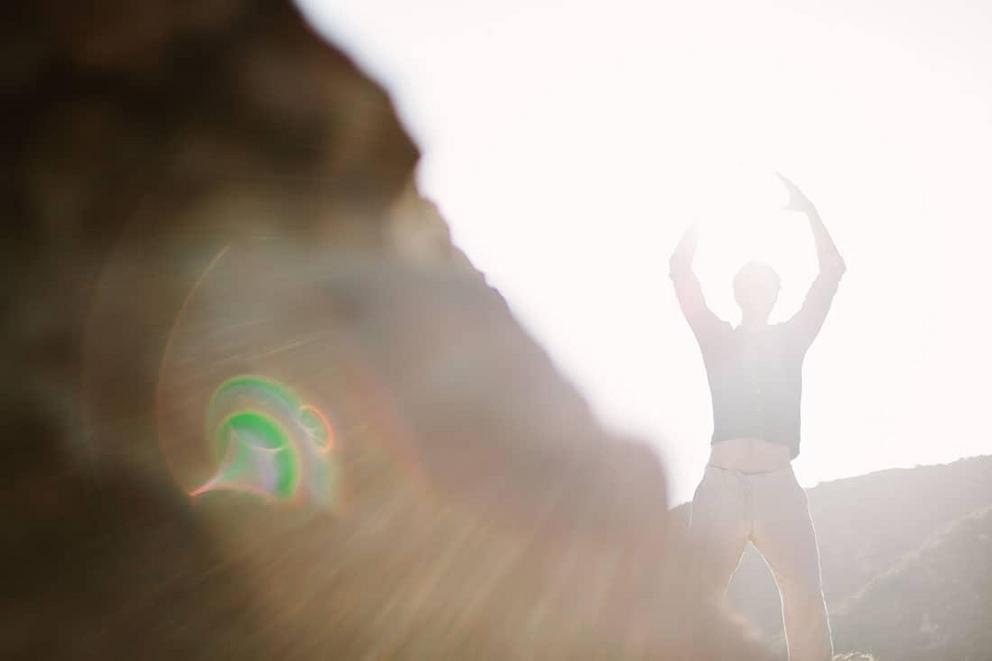
Qigong (pronounced: chee-gun), which combines meditative and physically active elements, is the basic exercise system within Chinese medicine. Qigong exercises are designed to help you preserve your Jing, strengthen and balance the flow of Qi energy, and enlighten your Shen.
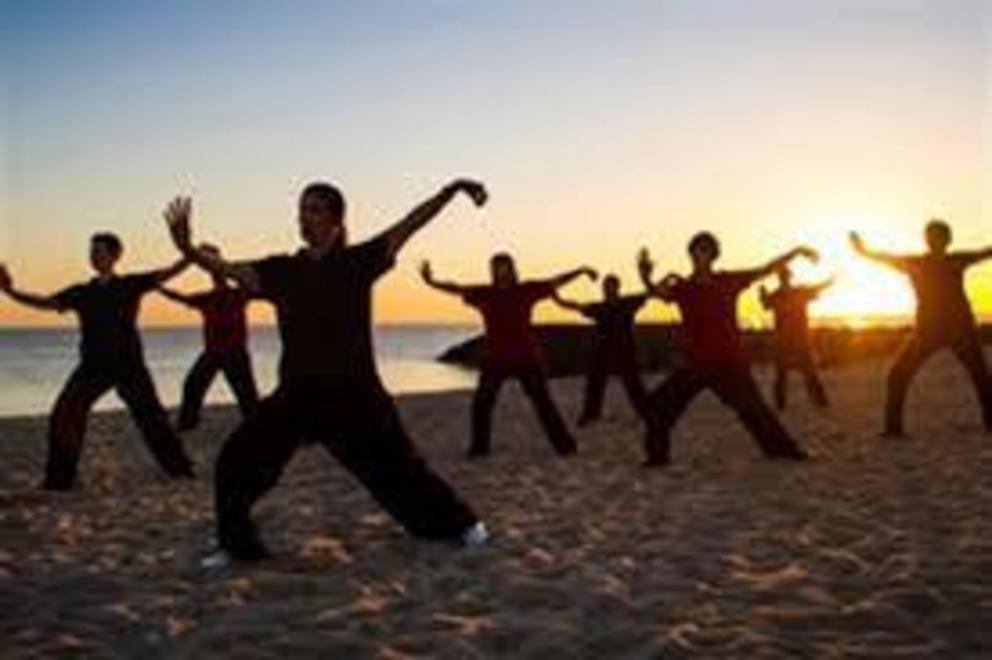
Its dynamic exercises and meditations have Yin and Yang aspects: The Yin is being it; the Yang is doing it.
Yin qigong exercises are expressed through relaxed stretching, visualization, and breathing.
Yang qigong exercises are expressed in a more aerobic or dynamic way.
They are particularly effective for supporting the immune system. In China, Qigong is used extensively for people with cancer.
Qigong’s physical and spiritual routines move Qi energy through the Twelve Primary Channels and Eight Extra Channels, balancing it, smoothing the flow, and strengthening it.
Chinese medicine uses Qigong exercises to maintain health, prevent illness, and extend longevity because it is a powerful tool for maintaining and restoring harmony to the Organ Systems, Essential Substances, and Channels.
Qigong is also used for non-medical purposes, such as for fighting and for pursuing enlightenment.
Anyone of any age or physical condition can do Qigong.
You don’t have to be able to run a marathon or bench press a car to pursue healthfulness and enjoy the benefits.
When you design your qigong exercise / meditation practice, you will pick what suits your individual constitution.
Some of us are born with one type of constitution; some with another.
We each have inherited imbalances that we cannot control but with which we must work.
That’s why for some people it is easier to achieve balance and strength than it is for others.
But whatever your nature, Qigong can help you become the most balanced you can be.
Qigong is truly a system for a lifetime.
That’s why so many people over age sixty in China practice Qigong and Tai Chi.
The effects may be powerful, but the routines themselves are usually gentle.
Even the dynamic exercises—some of which explode the Qi energy— use forcefulness in different ways than in the West.
The following are some effects of Qigong exercises practiced regularly.

Maintaining Health
Qigong exercises help maintain health by creating a state of mental and physical calmness, which indicates that the Qi energy is balanced and harmonious.
This allows the mind/body/spirit to function most efficiently, with the least amount of stress.
When you start practicing Qigong exercises, the primary goal is to concentrate on letting go, letting go, letting go.
That’s because most imbalance comes from holding on to too much for too long.
Most of us are familiar with physical strength of muscles, and when we think about exercising, we think in terms of tensing muscles.
Qi energy is different.
Qi strength is revealed by a smooth, calm, concentrated effort that is free of stress and does not pit one part of the body against another.
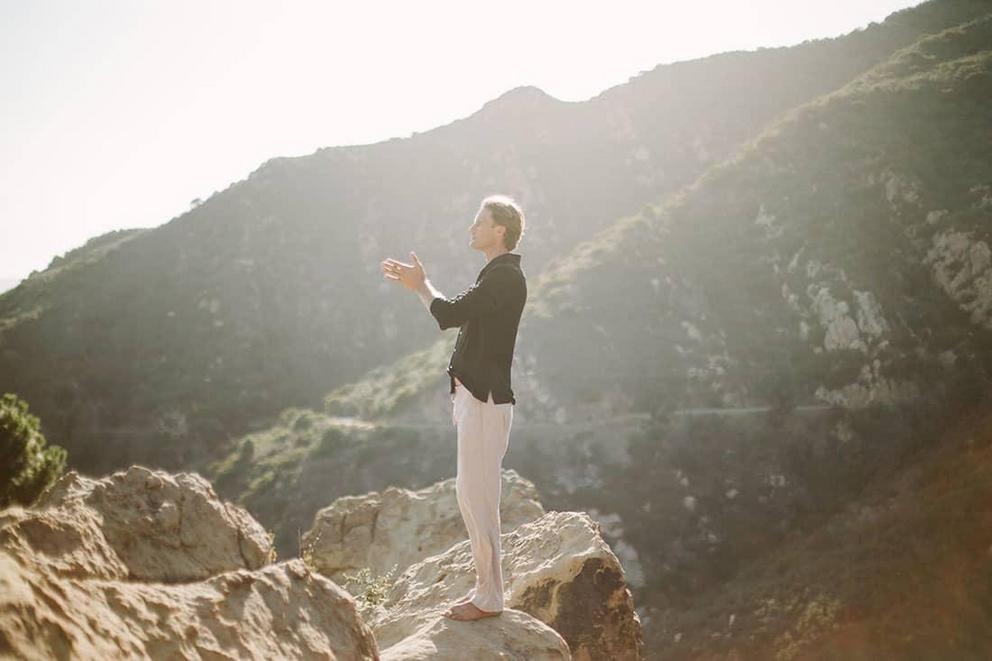
Managing Illness
It’s harder to remedy an illness than to prevent it, and Qigong has powerful preventive effects.
However, when disharmony becomes apparent, Qigong exercises also can play a crucial role in restoring harmony.
Qigong movement and postures are shaped by the principle of Yin/Yang: the complementary interrelationship of qualities such as fast and slow, hard and soft, Excess or Deficiency, and External and Internal.
Qigong exercises use these contrasting and complementary qualities to restore harmony to the Essential Substances, Organ Systems, and Channels.
Extending Longevity
In China, the use of Qigong exercises for maintaining health and curing illness did not satisfy those Buddhists and Daoists who engaged in more rigorous self-discipline.
They wanted to be able to amplify the power of Qi energy and make the internal Organ Systems even stronger.
This arcane use of Qigong was confined mostly to monasteries and the techniques have not been much publicized.
One of the most difficult and profoundly effective techniques is called Marrow Washing Qigong.
Practitioners learn to master the intricate manipulation of Qi—infusing the Eight Extraordinary Channels with Qi, and then guiding the Qi energy through the Channels to the bone marrow to cleanse and energize it.
The result, according to religious tradition, is that monks can extend their life span to 150 years or more.
The Daoists have a saying, “One hundred and twenty years means dying young.”
Although few if any of us can devote our lives to the stern practices of the monks, the health benefits of Qigong exercises certainly do improve the quality of life of everyone who practices it.
Waging Combat
Around 500 CE, in the Liang Dynasty, Qigong was adopted by various martial artists to increase stamina and power.
For the most part, the breathing, concentration, and agility were assets to the warriors and improved their well-being.
Attaining Enlightenment
Buddhist monks who use Qigong exercises in their pursuit for higher consciousness and enlightenment concentrate on the Qigong’s ability to influence their Shen.
Mastering Marrow Washing allows the practitioner to gain so much control over the flow of Qi energy that he or she can direct it into the forehead and elevate consciousness.
The rest of us can enjoy the influence of Qigong on our Shen (spiritual body/energy), but at a lower level.
Whatever reason you use Qigong, the practice should raise your Qi to a higher state if you increase concentration, practice controlled breathing, and execute the Qigong routines.
The Foundational Techniques
Here are the basic Qigong exercise techniques.
Concentration
Concentration leads to and results from Qi energy awareness, breathing techniques, and Qigong exercises.
It is a process of focusing in and letting go at the same time.
Focusing does not mean that you wrinkle up your forehead and strain to pay attention.
Instead, through deep relaxation and expanding your consciousness, you are able to create a frame of mind that is large enough to encompass your entire mind – body – spirit’s functions, yet focused enough to allow outside distractions, worries, and everyday hassles to drift away.
This inward focus that expands outward to join you with the rhythms of the universe epitomizes Yin/Yang.
Yin energy tends to be more expansive, and Yang energy more concentrated.
You discover your Yin/Yang balance by treating Yin and Yang as ingredients in a recipe: Add a bit more Yin, toss in a dash of Yang to make the mixture suit your constitution or circumstances.
Some people need more or less Yin or Yang, depending upon the situation.
‘Extending the Qi exercise’ outlined below provides a clear demonstration of how you can practice establishing your balanced blend of Yin and Yang.
You will find that as you do qigong exercise and meditation you become more adept at this form of concentration, because it is the natural expression of the practice.
As you learn to concentrate more effectively, you will find you have greater power to affect Qi energy through the various Qigong exercises in this chapter or through the use of other focused meditations and Tai Chi.
Breathing
In the sixth century BCE, Lao Tzu first described breathing techniques as a way to stimulate Qi energy.
From there, two types of Qigong breathing exercises evolved: Buddha’s Breath and Daoist’s Breath.
Both methods infuse the body with Qi and help focus meditation.
Buddha’s Breath:
When you inhale, extend your abdomen, filling it with air.
When you exhale, contract you abdomen, expelling the air from the bottom of your lungs first and then pushing it up and out until your abdomen and chest are deflated.
You may want to practice inhaling for a slow count of eight and exhaling for a count of sixteen.
As you breathe in and out, imagine inviting your Qi energy to flow through the Channels.
Use your mind to invite the Qi to flow; you want to guide the flow, not tug at it or push it.
Daoist’s Breath:
The pattern is the opposite of above.
When you breathe in, you contract your abdominal muscles.
When you exhale, you relax the torso and lungs.
As you travel through these steps, remember that Qigong is a process of building awareness.
However you are comfortable doing the routines is what’s right for you at that time.
Warm-Up Exercises (10 to 15 min.)
Qigong Exercise One: Gentle Sway
1. For five minutes, move both of your arms from your shoulders in a gentle swinging motion.
The motion itself is initiated from your waist: Twist from the waist as though your torso were a washcloth that you were wringing out.
Don’t twist from the knees or you may harm them.
Furthermore, twisting from the waist provides a massage to the internal organs and provides you the full benefits of the exercise.
2. To get started, move your arms side to side across your torso, and then back to front.
3. Keep your knees slightly bent. Let your hips sway.
Allow your mind to clear.
At first, focus on the release of unnecessary and unconscious stress.
After several weeks, you may shift your focus so that you think only about the swaying of your arms and the motion of Qi energy.
This introduces you to the concept of being mindful of the present, much the same concept as found in Zen walking.
Qigong Exercise Two: The Bounce
In the beginning, try this for one to three minutes.
1. With your feet parallel and about shoulder’s width apart, bounce with your knees loose and your arms hanging at the sides like a wet noodle.
They should feel empty and neutral.
This is the zero position for your arms.
When you are bouncing back and forth, your arms in zero should get a nice jiggling effect.
2. Keep your shoulders natural; neither pull them back or let them slump forward too much.
When the zero position is used on the whole body, you should receive a feeling of deep relaxation and your internal organs and skin should hang down.
This process brings awareness of internal tension so that you can do something to dispel it, if you choose.
The combination of exercises one and two gently massages and tonifies the Organ Systems, which helps promote longevity.
Qigong Exercise Three: Accordion
In this, you feel the Qi energy by using your hands like the bellow of an accordion or a bicycle pump.
1. Close your eyes halfway.
Clear your mind and concentrate your attention on your palms.
2. Allow your breath to become slow, easy, without force.
In a way, you are creating the very lightest trance.
3. Bring your hands together, palms touching and fingers pointing upward.
The palm chakras, called Laogong, located in the center of the palms, should be touching.
These chakras are areas where Qi can be felt emanating from the body.
4. Slowly move your hands, keeping the chakras aligned.
When they are about 12 inches (30 cm) apart, slowly move them together using the least amount of physical effort possible.
5. You will be compressing the air between them like an accordion would.
6. Feel a warm or tingling sensation at the Laogong points on your palms.
7. Move your hands slowly back and forth, varying the range of the bellows.
Repeat the accordion technique in different directions: horizontally, vertically, and diagonally.
This exercise cultivates Qi, builds awareness, and sensitizes yourself.
When you feel Qi energy for the first time, it changes your mind-set.
Qigong Exercise Four: Making the Point
1. Using your index finger is a powerful way of directing Qi energy.
If you are right-handed, use you right index finger; if you are left-handed, use your left index finger.
Point it directly at the flat palm of your other hand.
That hand should be perpendicular to the floor with your fingers pointing straight up.
2. Use your index finger like a paintbrush to swab back and forth across your palm.
3. Begin with your fingertip about 8 inches (20 cm) from your palm.
Slowly move it closer and farther away, swabbing all the time.
You may feel a tickling sensation, a cooling, or a warming of your palm.
Qigong Exercise Five: Extending the Qi
If you have Deficient Qi, you should perform this exercise with your eyes half closed to cultivate and accumulate Qi energy.
1. If you have Stagnant Qi, the exercise may be done with your eyes fully open.
You will inhale swiftly through your nostrils with your eyes open or half closed when you exhale.
Note: You should exercise caution when practicing Qi exercises at home—without a teacher nearby—because they are powerful, and Qi can leak out your eyes.
2. Once you can sense the Qi, exercise your intention (which is the mind/spirit part of the exercise) and use your mind to move your Qi out from your body, expanding the zone in which you are comfortable.
You may allow the Qi to drift out on the exhalation and then hold it there as you inhale.
3. First move the Qi into an orbit 1 inch (2.5 cm) from your skin.
In increments of 6 inches (15 cm), move it outward, aiming for 3 feet (91 cm), but find the point where you are comfortable with it.
Then bring it back in until it returns close to your body.
This qigong exercise allows you to communicate with your Qi energy.
By increasing the distance away from your body that you can feel Qi, you expand your area of comfort—your field of generosity—in the world around you.
You will have less fear and greater abilities.
By being able to bring your Qi halo in to skin level (or inside your skin) you may become more centered, calm, and self-assured.
When you have learned to be comfortable expanding and contracting your Qi, you will feel stronger, healthier, and more in harmony internally and externally.
Qigong Exercise Six: Pumping the Qi
This is a tricky exercise that moves the Qi energy along the two connecting Extraordinary Channels: the Du Mai and Ren Mai.
You may think of it as evolve, devolve, because your posture goes from a slumped, gorilla-like stance to an upright extended pose.
It is adapted from the Wild Goose Qigong exercise routine.
1. The first position pushes the Qi down.
As your hands push flat down, your spine and head straighten upward.
Then as you allow the Qi to flow back upward, your hands rise, elbows bent and palms parallel to the floor.
Your shoulders hunch.
Repeat this six or seven times, inhaling as your hands come up and exhaling as your hands go down.
2. When you are comfortable with this Qigong exercise, you may combine it with a slow intentional walk forward: left knee bent and raised in an exaggerated stepping motion.
When your knee comes up, your hands go down and back and your spine straightens; when your foot touches the ground, your hands come up and your back hunches.
Place your feet very gently on the ground and allow each step to proceed in slow motion, at a tempo that soothes and relaxes.
Remember to maintain a breathing pattern, too.
Inhale as your hands come up and your shoulders hunch.
Exhale slowly, expanding your chest as you straighten your back.
If this feels awkward, don’t despair.
Even in a classroom situation, it takes a while to catch on to what to do.
Qigong Exercise Seven: Blending Qi
This exercise should help you become aware of various resonations of Qi energy and learn to blend them into a harmonious flow.
1. Stand with your feet a shoulder’s width apart, with your knees slightly bent.
Allow your hands and arms to hang at your sides.
2. Shift your weight slightly to the balls of your feet.
Simply be aware of the front side of your body.
Concentrate on the Channels that pass along the front of your legs and torso, the top of your hands and arms, and your face.
3. After one minute, shift your weight to your heels.
Become aware of the back of your body: the back of your head, your arms, your spine, and your legs.
With practice, you may hold these postures for up to five minutes or longer.
4. You can also do this for the left and right sides of the body.
5. In each instance, you may want to become aware of each section of the body.
For example, the side of your head, the side of your arm and torso, your outer hip, the side of your leg and ankle, and the length of your foot.
This makes the exercise a meditation.
6. Now, shifting to a more Nei Dan form of Qigong exercise, repeat the first three steps, but the motion should not be detectable visually.
Use your mind to shift your weight forward and backward, feeling your Qi flowing along the front and back of your body.
7. Next, try to feel your Qi flowing along your back and front simultaneously.
Students are often bewildered by the idea of feeling two sensations at the same time, but a useful analogy is to think of the color yellow and the color blue.
When you blend those two colors together, you produce green.
That green then becomes its own entity with its own wavelength.
The same is true of blending the Qi energy from your front and from your back.
The blend becomes another entity with its own resonation.
Advanced Qigong Breathing Exercise
Breathing can direct Qi energy through the body like the wind filling the sails of a ship.
Qigong breathing exercises can invigorate or sedate, depending on how you use them.
On alternate days, practice the following routine, using Buddha’s Breath and Daoist’s Breath breathing techniques.
1. Sit on the floor with your legs crossed in lotus or cross-legged style.
This is important so that Qi energy does not enter and become Stagnant in the lower body, but follows the breathing path through your torso and your head.
2. Inhale to a count of four to eight, depending on what you are comfortable with.
For Buddha’s Breath, extend your belly, filling it up from the bottom.
For Taoist’s Breath, inhale, contracting your abdomen, and exhale, letting your abdomen relax outward.
3. As you inhale, turn your attention to your nose.
Guide the Qi energy downward from your nose toward the Dantian, 1 to 2 inches (2.5 to 5 cm) below the navel.
Women should not concentrate on the Dantian during their periods.
Concentrate on your solar plexus instead.
4. Exhale to a count of eight to sixteen and move the Qi energy down the torso, around your pelvic region, and up to your tailbone.
5. Inhale and move the Qi up the back to the top of your shoulders.
6. Exhale and move the Qi up the back of your head and back to your nose.
7. If you cannot feel the Qi clearly, patience and practice will make it more apparent.
8. Once you are comfortable with this Qigong practice, you may increase the pace by completing the cycle in one inhalation and one exhalation.
On the inhalation, move Qi energy from your nose to your tailbone.
On the exhalation, move Qi from your tailbone back to your nose.
sprinkles
Well-known member
- MBTI
- xxxx
Reminds me of Yume Nikki but more sensical and way less sinister.Hahaha... @Wyote @sprinkles
You’ll have to try this one out and let me know your gaming opinion, lol.
It's a game of lucid dreaming. Very dark and insane lucid dreaming.
Skarekrow
~~DEVIL~~
- MBTI
- Ni-INFJ-A
- Enneagram
- Warlock
I'm totally checking it out.It's a game of lucid dreaming. Very dark and insane lucid dreaming.
John K
Donor
- MBTI
- INFJ
- Enneagram
- 5W4 549
Some very fascinating theories and thoughts from some very smart folks regarding “Free Will”.
What say you??
Free will is a Utopian dream. Mine and my family's usual cost me a bloody fortune .....
neko
poopie head
- MBTI
- INFJ
Awww! Do you have a cat? =^.^=




LMAO

John K
Donor
- MBTI
- INFJ
- Enneagram
- 5W4 549
This extract reminded me of some of your posts @Skarekrow. One of the reasons I like longer pieces of more complex music - classical, some jazz, Asian music - is because I can lose my-self in them in a way I can't with something that lasts only a few minutes.

In March 1932, halfway through a hectic visit to the United States to conduct various orchestras and to teach at Harvard, Gustav Holst succumbed to a bleeding stomach ulcer and nearly died. As he subsequently recounted it to Ralph Vaughan Williams: ‘I felt I was sinking so low that I couldn’t go much further. And, as I have always expected, it was a lovely feeling… As soon as I reached the bottom, I had one clear, intense and calm feeling – that of overwhelming gratitude. And the four chief reasons for gratitude were music, the Cotswolds, RVW, and having known the impersonality of orchestral playing.’
That Holst found the near-death experience something of a release is not so surprising after decades of chronic overwork. Nor were his first three reasons for gratitude unexpected. Music had possessed him so completely since childhood that it was all the same to him whether he was elaborating The Hymn of Jesus (1917) in his soundproof room at St Paul’s Girls’ School or listening to competitive brass bands rollicking through one of his suites; whether he was conducting the Boston Symphony Orchestra in a Haydn symphony or coaxing thousands of war-weary troops in the Middle East to sing madrigals. What mattered was the involvement. In fact, he regarded the fame and attention that the impact of The Planets (1914-16) brought him in the 1920s as a downright nuisance.
Holst first met Vaughan Williams as a fellow student at London’s Royal College in 1895 and this was rapidly to develop into one of the most fruitful friendships in the history of British music. By the time they met, Holst was already a professional trombonist and Vaughan Williams was to rely on his technical advice in matters of orchestral scoring to the end. In the other direction, it was Vaughan Williams’s fieldwork and two-year stint editing the English Hymnal that awoke Holst’s interest in folkdance and folksong, in plainchant and hymnology. Both composers were enthused by the visionary verse of Walt Whitman and the socialist message of William Morris, while also being involved in the rediscovery of Tudor church music and Purcell.
True, there was a period in the 1920s when they seemed to be drifting artistically apart, but the personal friendship never failed. Stunned by Holst’s unexpected death from heart failure a couple of days after an apparently successful operation on that same gastric ulcer in May 1934, Vaughan Williams wrote that ‘my only thought is now which ever way I turn, what are we to do without him – everything seems to have turned back to him – what would Gustav think or advise or do…?’
But what of that fourth reason for Holst’s gratitude: ‘having known the impersonality of orchestral playing’? It raises the enigma of his personality. By all accounts – not least, the biographical writings of his daughter Imogen – he was a generous, approachable man, wholly innocent of intellectual or social snobbery. In his twenties, he was drawn to Hindu mythology, actually learning Sanskrit in order to make his own translations from the Rig Veda, while The Planets was inspired by a fascination for astrology. For Holst, the function of the composer was not so much to express his or her personality as to serve as a kind of supra-personal receptor to potentially musical impulses from all around, and, not least – though Holst himself seems to have remained essentially agnostic – from above.

In March 1932, halfway through a hectic visit to the United States to conduct various orchestras and to teach at Harvard, Gustav Holst succumbed to a bleeding stomach ulcer and nearly died. As he subsequently recounted it to Ralph Vaughan Williams: ‘I felt I was sinking so low that I couldn’t go much further. And, as I have always expected, it was a lovely feeling… As soon as I reached the bottom, I had one clear, intense and calm feeling – that of overwhelming gratitude. And the four chief reasons for gratitude were music, the Cotswolds, RVW, and having known the impersonality of orchestral playing.’
That Holst found the near-death experience something of a release is not so surprising after decades of chronic overwork. Nor were his first three reasons for gratitude unexpected. Music had possessed him so completely since childhood that it was all the same to him whether he was elaborating The Hymn of Jesus (1917) in his soundproof room at St Paul’s Girls’ School or listening to competitive brass bands rollicking through one of his suites; whether he was conducting the Boston Symphony Orchestra in a Haydn symphony or coaxing thousands of war-weary troops in the Middle East to sing madrigals. What mattered was the involvement. In fact, he regarded the fame and attention that the impact of The Planets (1914-16) brought him in the 1920s as a downright nuisance.
Holst first met Vaughan Williams as a fellow student at London’s Royal College in 1895 and this was rapidly to develop into one of the most fruitful friendships in the history of British music. By the time they met, Holst was already a professional trombonist and Vaughan Williams was to rely on his technical advice in matters of orchestral scoring to the end. In the other direction, it was Vaughan Williams’s fieldwork and two-year stint editing the English Hymnal that awoke Holst’s interest in folkdance and folksong, in plainchant and hymnology. Both composers were enthused by the visionary verse of Walt Whitman and the socialist message of William Morris, while also being involved in the rediscovery of Tudor church music and Purcell.
True, there was a period in the 1920s when they seemed to be drifting artistically apart, but the personal friendship never failed. Stunned by Holst’s unexpected death from heart failure a couple of days after an apparently successful operation on that same gastric ulcer in May 1934, Vaughan Williams wrote that ‘my only thought is now which ever way I turn, what are we to do without him – everything seems to have turned back to him – what would Gustav think or advise or do…?’
But what of that fourth reason for Holst’s gratitude: ‘having known the impersonality of orchestral playing’? It raises the enigma of his personality. By all accounts – not least, the biographical writings of his daughter Imogen – he was a generous, approachable man, wholly innocent of intellectual or social snobbery. In his twenties, he was drawn to Hindu mythology, actually learning Sanskrit in order to make his own translations from the Rig Veda, while The Planets was inspired by a fascination for astrology. For Holst, the function of the composer was not so much to express his or her personality as to serve as a kind of supra-personal receptor to potentially musical impulses from all around, and, not least – though Holst himself seems to have remained essentially agnostic – from above.
Skarekrow
~~DEVIL~~
- MBTI
- Ni-INFJ-A
- Enneagram
- Warlock
Free will is a Utopian dream. Mine and my family's usual cost me a bloody fortune .....
“There is a tyranny in the womb of every Utopia.”
~ Bertrand De Jouvenel
Awww! Do you have a cat? =^.^=
Two...Mishi...and Dandy Lion.
One grey tabby and one orange cream swirl.
This extract reminded me of some of your posts @Skarekrow. One of the reasons I like longer pieces of more complex music - classical, some jazz, Asian music - is because I can lose my-self in them in a way I can't with something that lasts only a few minutes.

In March 1932, halfway through a hectic visit to the United States to conduct various orchestras and to teach at Harvard, Gustav Holst succumbed to a bleeding stomach ulcer and nearly died. As he subsequently recounted it to Ralph Vaughan Williams: ‘I felt I was sinking so low that I couldn’t go much further. And, as I have always expected, it was a lovely feeling… As soon as I reached the bottom, I had one clear, intense and calm feeling – that of overwhelming gratitude. And the four chief reasons for gratitude were music, the Cotswolds, RVW, and having known the impersonality of orchestral playing.’
That Holst found the near-death experience something of a release is not so surprising after decades of chronic overwork. Nor were his first three reasons for gratitude unexpected. Music had possessed him so completely since childhood that it was all the same to him whether he was elaborating The Hymn of Jesus (1917) in his soundproof room at St Paul’s Girls’ School or listening to competitive brass bands rollicking through one of his suites; whether he was conducting the Boston Symphony Orchestra in a Haydn symphony or coaxing thousands of war-weary troops in the Middle East to sing madrigals. What mattered was the involvement. In fact, he regarded the fame and attention that the impact of The Planets (1914-16) brought him in the 1920s as a downright nuisance.
Holst first met Vaughan Williams as a fellow student at London’s Royal College in 1895 and this was rapidly to develop into one of the most fruitful friendships in the history of British music. By the time they met, Holst was already a professional trombonist and Vaughan Williams was to rely on his technical advice in matters of orchestral scoring to the end. In the other direction, it was Vaughan Williams’s fieldwork and two-year stint editing the English Hymnal that awoke Holst’s interest in folkdance and folksong, in plainchant and hymnology. Both composers were enthused by the visionary verse of Walt Whitman and the socialist message of William Morris, while also being involved in the rediscovery of Tudor church music and Purcell.
True, there was a period in the 1920s when they seemed to be drifting artistically apart, but the personal friendship never failed. Stunned by Holst’s unexpected death from heart failure a couple of days after an apparently successful operation on that same gastric ulcer in May 1934, Vaughan Williams wrote that ‘my only thought is now which ever way I turn, what are we to do without him – everything seems to have turned back to him – what would Gustav think or advise or do…?’
But what of that fourth reason for Holst’s gratitude: ‘having known the impersonality of orchestral playing’? It raises the enigma of his personality. By all accounts – not least, the biographical writings of his daughter Imogen – he was a generous, approachable man, wholly innocent of intellectual or social snobbery. In his twenties, he was drawn to Hindu mythology, actually learning Sanskrit in order to make his own translations from the Rig Veda, while The Planets was inspired by a fascination for astrology. For Holst, the function of the composer was not so much to express his or her personality as to serve as a kind of supra-personal receptor to potentially musical impulses from all around, and, not least – though Holst himself seems to have remained essentially agnostic – from above.
Fascinating John!
Thanks for sharing and the kind comparison.
This actually made me think of a TED talk I watched just recently about the music of the universe.
It makes one think if our perceptions of reality were just slightly different, and we heard the stars like this instead of visually saw them how differently would we think and evolve...I’m sure our lives would be drastically different.
It’s something to meditate on for fun anyway!
Cheers!
Here -
Skarekrow
~~DEVIL~~
- MBTI
- Ni-INFJ-A
- Enneagram
- Warlock
Okay...so now a bit of the bizarre.
I can’t believe that she ran for Parliament on the platform that she did - do you really think people are going to vote for that on purpose?!
Hahaha!
Enjoy the madness - or genius??
Hmmmm?

There are plenty of ways to achieve a higher state of consciousness.
Most of them involve ingesting some kind of psychoactive substance, or getting in a white tank filled with water, or sitting in front of a flashing light while listening to trance music.
But as far as I know, only one requires you to drill a hole into your forehead.
Trepanation, a procedure where a small hole is drilled into the skull and left to heal naturally, can reportedly produce a prolonged positive effect on the trepanned individual's mood and overall state of well-being.
There's little hard scientific evidence that doing this has any tangible benefits, but people have been doing it for tens of thousands of years, so there has to be a reason they keep coming back to the tried and true method of inserting pieces of metal into the front of their skulls.
Amanda Feilding is the director of the Beckley Foundation, an organization that for over a decade has been carrying out research into consciousness. Her work spans the entire mind-altering spectrum, from cannabis and LSD to Buddhist meditation, and she's been looking into the physiological effects of trepanation for a long time.
In the early 1970s, Amanda trepanned herself when she couldn't find a doctor to do it for her, and has since become somewhat of an authority on the practice.
I visited Amanda's home on the outskirts of Oxford, England, to talk about trepanation and how she carried out the operation on herself.

Amanda in 2012.
VICE: So Amanda, can you give me a short history of trepanation?
Amanda Feilding: Trepanation is the oldest surgical operation in the world, dating back to at least 10,000 BC, and has been carried out by independent civilizations in nearly every continent on the planet.
From South America to Neolithic Europe, the practice has a rich and diverse history.
Shiva, the Hindu god of altered consciousness, was trepanned; it was done by monks in Tibet and up to the modern day in Africa.
What do you mean by "modern day”?
The 20th century.
I knew someone from Nigeria in the 60s who said that, when he was 13, the "hip" boys of the village went out with the shaman and got trepanned.
Did it have a legitimate medicinal purpose?
Absolutely.
These civilizations couldn't hypothesize scientifically on the physiology behind trepanation, so they gave it their own esoteric explanation.
In other places it was described as "letting light in" or "letting devils out.”
It has been successfully used to treat chronic headaches, epilepsy, and migraines, and it was surprisingly common until the First World War, when doctors started doing lobotomies—that's when it was suddenly seen as a primitive practice.
My father's encyclopedia from 1912 says that trepanation was being increasingly used in the treatment of mental disorders.
In fact, it's still regularly used today to enter the brain for operations, but the hole is often filled.
Did it have a religious significance?
For some, trepanation was a ritualistic practice in which the shamans, the kings, and the priests were trepanned.
I'd suggest this was because, particularly in South American societies, these were the ones taking psychoactive drugs.
The lifting of the baseline brought about by trepanation gave them less of a distance to come down from after the drugs wore off.
You trepanned yourself.
What attracted you to it?
In the 60s I was doing a lot of work on comparative religions and mysticism, and I heard of a Dutch scientist who had trepanned himself and had a theory of the underlying physiological changes brought about by it.
I didn't know him before he was trepanned, which meant I didn't know what changes had come about.
Even though I was interested in trepanation, I wasn't particularly concerned with having it done myself.
But I had another friend who did it and I noticed a definite change in him that was very subtle—a mellowing, a lessening of the neurotic behavior that we all have.
I knew him exceptionally well and did notice a difference.
Later, another friend had it done who had chronic headaches that caused him to lose a day or two a week, but he hasn't had those headaches for the last 30 years [since he was trepanned].
I started to seek out a doctor who would trepan me, including a doctor to the royal family who was very interested.
In fact, he had a hole in his head from an accident as a child.
After four years of unsuccessful searching, I decided to do it myself.

A trepanned skull found in Peru.
What sort of preparations did you make?
I was obviously very cautious and prepared myself very carefully.
I used an electrical drill with a flat bottom and a foot pedal, and tested the drill head on the membranes of my hand to see if it would damage the skin.
The whole thing was carefully prepared, but more than anything I prepared myself psychologically.
It's the last thing you want to do.
Yeah, drilling a hole in your head kind of goes against every instinct.
Then I thought I'd make a film about it, being an artist.
It was useful making the film, because it felt like I was separating myself from the situation and taking a step away.
So you've got the physical anesthetic, then the mental anesthetic of treating it as a piece of artwork.
Yeah, it was effective.
After I'd performed the procedure, I wrapped up my head with a scarf, had a steak to replace iron from the lost blood, and went to a party.
It doesn't set you back at all, it doesn't incapacitate you.
It's just a half-hour operation.
But in no way am I advocating the idea of self-trepanation; it should always be carried out by members of the medical profession.
How did you feel after the procedure?
I described it at the time as feeling like the tide coming in: there was a feeling of rising, slowly and gently, to levels that felt good, very subtle. One very clear thing I noticed was the change in the dream pattern: my dreams became much less anxious—that was quite noticeable.
Could all of that be described as a placebo?
There is, of course, that possibility, and I am very conscious of that.
I have to say I noticed enough of a change to keep me interested, and noticed it in the people who I knew well who also got trepanned.
I noticed a fundamental change in all of them.
So what's the main premise behind trepanation?
When a baby is born, the top of the skull is very soft and flexible.
First, the fontanelle [the soft area on the top of the skull] closes, then the skull bones close, which inhibits the full pulsation of the heartbeat, so it is denied its full expression in the brain, so to speak.
That loss of "pulse pressure" results in a change of ratio between the two fluids in the brain: blood and cerebral spinal fluid.
It is blood that feeds the brain cells with what they need, such as glucose and oxygen.
The cerebral spinal fluid removes some of the toxic molecules.
Trepanation works by restoring the full pulse pressure of the heartbeat.
Then the capillaries slightly blow up and squeeze out an equal amount of the cerebral spinal fluid.
When the circulation becomes sluggish [when not enough cerebral spinal fluid is being pumped into the brain], stagnant pools can build up and this can contribute to the onset of diseases such as dementia and Alzheimer's.

A 17th-century trepanation kit given to Amanda as a gift.
After setting up the Beckley Foundation, you started to work on research into the effects and possible benefits of trepanation.
What things did you investigate?
The research that I've been doing with the Russian scientist professor [Yuri] Moskalenko involved observing patients who were being trepanned for other operations and what happened when the bone was removed and not replaced.
It did provide more blood to the brain and, with those subjects who had their hole filled, [blood flow] then decreased.
It's clear that making the hole increases the cerebral circulation and that closing it diminishes it.
But research with a healthy population is needed.
The second piece of research we did was with people with varying stages of Alzheimer's.
It showed that these people's cerebral spinal fluid had much lower mobility than someone who had a "healthy" cerebral circulation.
It wasn't a lack of blood in the brain of these patients that was the problem, it was a lack of washing out of the toxic molecules by cerebral spinal fluid.
This research contributed to the development of a device that can measure these things, possibly acting as an early warning signal for brain diseases.
Whether trepanation can act as a preventive measure to combat these diseases, and whether it has other effects, is research that I would love to conduct in the future.
This is still a hypothesis, one which isn't provable at the moment because I don't think we have the instrumentation to fully investigate it yet. But it seems that this is what trepanation has historically been used for, even if the people doing it at the time didn't understand the reasoning behind it.
The research we did on trepanation, which was only done on about 15 people, is not nearly enough to make any concrete scientific claims.
We need more research with more people.
Would you be doing the research even if you weren't trepanned?
Yes, I think so.
But I suppose that my personal experience of getting trepanned—which I, of course, would not put total faith in—gave me the feeling that it is worthy of research.
How are you going about doing that research?
It's difficult: although it's not illegal to trepan, it's not exactly legal, either.
It's a catch-22.
You can't get the research authorized because there's not enough evidence to support it, but you can't get the evidence without research.
I think it's strange that people can get sex changes but not trepanation—a simple operation.
We should research this simple operation that could increase consciousness.

Amanda's campaign poster for her campaigns for Parliament in 1979 and 1983.
(Yeah fucking right lady!!)
Do you see it becoming legal in the future?
I definitely do. I see it particularly in countries that are more familiar with the idea of consciousness, like Brazil or India.
Didn't you try to make trepanation available on the UK's National Health Service?
I stood for Parliament in Chelsea on the platform "Trepanation for the National Health.”
I didn't intend to get voted in; it was more of an art project.
My intention was to try to get the medical profession to agree that this is an interesting subject and is worthy of research.
Over the past 40 years I've got used to fighting the prejudice around trepanation, and I've never really understood the taboo around it.
I feel society is not doing itself any favors by making this a taboo, and I think the best thing that we can do is gain as much knowledge as we can about altered states of consciousness and how we can apply them for the good of mankind.
In traditional societies, which are much closer to consciousness, they recognize the shamanic process, the process of changing consciousness, whether that's fasting or dancing or the ingestion of psychoactive substances.
They recognize that it's a very important part of society and deciding which way to go with decisions.
(Skarekrow - If we were supposed to have a hole in our skull, then nature would have created one...the fontanels close in a baby’s head for a reason.
Just saying...lol)
I can’t believe that she ran for Parliament on the platform that she did - do you really think people are going to vote for that on purpose?!
Hahaha!
Enjoy the madness - or genius??
Hmmmm?

An Interview with the Woman
Who Drilled a Hole in Her Head to Open Up Her Mind
Amanda Feilding claims trepanation might make us happier,
healthier, and maybe help people at risk for Alzheimer's.
She's not only an expert, she conducted the operation on herself to see what was what.

Amanda Feilding trepanning herself.
Who Drilled a Hole in Her Head to Open Up Her Mind
Amanda Feilding claims trepanation might make us happier,
healthier, and maybe help people at risk for Alzheimer's.
She's not only an expert, she conducted the operation on herself to see what was what.

Amanda Feilding trepanning herself.
There are plenty of ways to achieve a higher state of consciousness.
Most of them involve ingesting some kind of psychoactive substance, or getting in a white tank filled with water, or sitting in front of a flashing light while listening to trance music.
But as far as I know, only one requires you to drill a hole into your forehead.
Trepanation, a procedure where a small hole is drilled into the skull and left to heal naturally, can reportedly produce a prolonged positive effect on the trepanned individual's mood and overall state of well-being.
There's little hard scientific evidence that doing this has any tangible benefits, but people have been doing it for tens of thousands of years, so there has to be a reason they keep coming back to the tried and true method of inserting pieces of metal into the front of their skulls.
Amanda Feilding is the director of the Beckley Foundation, an organization that for over a decade has been carrying out research into consciousness. Her work spans the entire mind-altering spectrum, from cannabis and LSD to Buddhist meditation, and she's been looking into the physiological effects of trepanation for a long time.
In the early 1970s, Amanda trepanned herself when she couldn't find a doctor to do it for her, and has since become somewhat of an authority on the practice.
I visited Amanda's home on the outskirts of Oxford, England, to talk about trepanation and how she carried out the operation on herself.

Amanda in 2012.
VICE: So Amanda, can you give me a short history of trepanation?
Amanda Feilding: Trepanation is the oldest surgical operation in the world, dating back to at least 10,000 BC, and has been carried out by independent civilizations in nearly every continent on the planet.
From South America to Neolithic Europe, the practice has a rich and diverse history.
Shiva, the Hindu god of altered consciousness, was trepanned; it was done by monks in Tibet and up to the modern day in Africa.
What do you mean by "modern day”?
The 20th century.
I knew someone from Nigeria in the 60s who said that, when he was 13, the "hip" boys of the village went out with the shaman and got trepanned.
Did it have a legitimate medicinal purpose?
Absolutely.
These civilizations couldn't hypothesize scientifically on the physiology behind trepanation, so they gave it their own esoteric explanation.
In other places it was described as "letting light in" or "letting devils out.”
It has been successfully used to treat chronic headaches, epilepsy, and migraines, and it was surprisingly common until the First World War, when doctors started doing lobotomies—that's when it was suddenly seen as a primitive practice.
My father's encyclopedia from 1912 says that trepanation was being increasingly used in the treatment of mental disorders.
In fact, it's still regularly used today to enter the brain for operations, but the hole is often filled.
Did it have a religious significance?
For some, trepanation was a ritualistic practice in which the shamans, the kings, and the priests were trepanned.
I'd suggest this was because, particularly in South American societies, these were the ones taking psychoactive drugs.
The lifting of the baseline brought about by trepanation gave them less of a distance to come down from after the drugs wore off.
You trepanned yourself.
What attracted you to it?
In the 60s I was doing a lot of work on comparative religions and mysticism, and I heard of a Dutch scientist who had trepanned himself and had a theory of the underlying physiological changes brought about by it.
I didn't know him before he was trepanned, which meant I didn't know what changes had come about.
Even though I was interested in trepanation, I wasn't particularly concerned with having it done myself.
But I had another friend who did it and I noticed a definite change in him that was very subtle—a mellowing, a lessening of the neurotic behavior that we all have.
I knew him exceptionally well and did notice a difference.
Later, another friend had it done who had chronic headaches that caused him to lose a day or two a week, but he hasn't had those headaches for the last 30 years [since he was trepanned].
I started to seek out a doctor who would trepan me, including a doctor to the royal family who was very interested.
In fact, he had a hole in his head from an accident as a child.
After four years of unsuccessful searching, I decided to do it myself.

A trepanned skull found in Peru.
What sort of preparations did you make?
I was obviously very cautious and prepared myself very carefully.
I used an electrical drill with a flat bottom and a foot pedal, and tested the drill head on the membranes of my hand to see if it would damage the skin.
The whole thing was carefully prepared, but more than anything I prepared myself psychologically.
It's the last thing you want to do.
Yeah, drilling a hole in your head kind of goes against every instinct.
Then I thought I'd make a film about it, being an artist.
It was useful making the film, because it felt like I was separating myself from the situation and taking a step away.
So you've got the physical anesthetic, then the mental anesthetic of treating it as a piece of artwork.
Yeah, it was effective.
After I'd performed the procedure, I wrapped up my head with a scarf, had a steak to replace iron from the lost blood, and went to a party.
It doesn't set you back at all, it doesn't incapacitate you.
It's just a half-hour operation.
But in no way am I advocating the idea of self-trepanation; it should always be carried out by members of the medical profession.
How did you feel after the procedure?
I described it at the time as feeling like the tide coming in: there was a feeling of rising, slowly and gently, to levels that felt good, very subtle. One very clear thing I noticed was the change in the dream pattern: my dreams became much less anxious—that was quite noticeable.
Could all of that be described as a placebo?
There is, of course, that possibility, and I am very conscious of that.
I have to say I noticed enough of a change to keep me interested, and noticed it in the people who I knew well who also got trepanned.
I noticed a fundamental change in all of them.
So what's the main premise behind trepanation?
When a baby is born, the top of the skull is very soft and flexible.
First, the fontanelle [the soft area on the top of the skull] closes, then the skull bones close, which inhibits the full pulsation of the heartbeat, so it is denied its full expression in the brain, so to speak.
That loss of "pulse pressure" results in a change of ratio between the two fluids in the brain: blood and cerebral spinal fluid.
It is blood that feeds the brain cells with what they need, such as glucose and oxygen.
The cerebral spinal fluid removes some of the toxic molecules.
Trepanation works by restoring the full pulse pressure of the heartbeat.
Then the capillaries slightly blow up and squeeze out an equal amount of the cerebral spinal fluid.
When the circulation becomes sluggish [when not enough cerebral spinal fluid is being pumped into the brain], stagnant pools can build up and this can contribute to the onset of diseases such as dementia and Alzheimer's.

A 17th-century trepanation kit given to Amanda as a gift.
After setting up the Beckley Foundation, you started to work on research into the effects and possible benefits of trepanation.
What things did you investigate?
The research that I've been doing with the Russian scientist professor [Yuri] Moskalenko involved observing patients who were being trepanned for other operations and what happened when the bone was removed and not replaced.
It did provide more blood to the brain and, with those subjects who had their hole filled, [blood flow] then decreased.
It's clear that making the hole increases the cerebral circulation and that closing it diminishes it.
But research with a healthy population is needed.
The second piece of research we did was with people with varying stages of Alzheimer's.
It showed that these people's cerebral spinal fluid had much lower mobility than someone who had a "healthy" cerebral circulation.
It wasn't a lack of blood in the brain of these patients that was the problem, it was a lack of washing out of the toxic molecules by cerebral spinal fluid.
This research contributed to the development of a device that can measure these things, possibly acting as an early warning signal for brain diseases.
Whether trepanation can act as a preventive measure to combat these diseases, and whether it has other effects, is research that I would love to conduct in the future.
This is still a hypothesis, one which isn't provable at the moment because I don't think we have the instrumentation to fully investigate it yet. But it seems that this is what trepanation has historically been used for, even if the people doing it at the time didn't understand the reasoning behind it.
The research we did on trepanation, which was only done on about 15 people, is not nearly enough to make any concrete scientific claims.
We need more research with more people.
Would you be doing the research even if you weren't trepanned?
Yes, I think so.
But I suppose that my personal experience of getting trepanned—which I, of course, would not put total faith in—gave me the feeling that it is worthy of research.
How are you going about doing that research?
It's difficult: although it's not illegal to trepan, it's not exactly legal, either.
It's a catch-22.
You can't get the research authorized because there's not enough evidence to support it, but you can't get the evidence without research.
I think it's strange that people can get sex changes but not trepanation—a simple operation.
We should research this simple operation that could increase consciousness.

Amanda's campaign poster for her campaigns for Parliament in 1979 and 1983.
(Yeah fucking right lady!!)
Do you see it becoming legal in the future?
I definitely do. I see it particularly in countries that are more familiar with the idea of consciousness, like Brazil or India.
Didn't you try to make trepanation available on the UK's National Health Service?
I stood for Parliament in Chelsea on the platform "Trepanation for the National Health.”
I didn't intend to get voted in; it was more of an art project.
My intention was to try to get the medical profession to agree that this is an interesting subject and is worthy of research.
Over the past 40 years I've got used to fighting the prejudice around trepanation, and I've never really understood the taboo around it.
I feel society is not doing itself any favors by making this a taboo, and I think the best thing that we can do is gain as much knowledge as we can about altered states of consciousness and how we can apply them for the good of mankind.
In traditional societies, which are much closer to consciousness, they recognize the shamanic process, the process of changing consciousness, whether that's fasting or dancing or the ingestion of psychoactive substances.
They recognize that it's a very important part of society and deciding which way to go with decisions.
(Skarekrow - If we were supposed to have a hole in our skull, then nature would have created one...the fontanels close in a baby’s head for a reason.
Just saying...lol)
JennyDaniella
Stargazer
- MBTI
- INFJ
- Enneagram
- 925
Okay...so now a bit of the bizarre.
I can’t believe that she ran for Parliament on the platform that she did - do you really think people are going to vote for that on purpose?!
Hahaha!
Enjoy the madness - or genius??
Hmmmm?
An Interview with the Woman
Who Drilled a Hole in Her Head to Open Up Her Mind
Amanda Feilding claims trepanation might make us happier,
healthier, and maybe help people at risk for Alzheimer's.
She's not only an expert, she conducted the operation on herself to see what was what.

Amanda Feilding trepanning herself.
There are plenty of ways to achieve a higher state of consciousness.
Most of them involve ingesting some kind of psychoactive substance, or getting in a white tank filled with water, or sitting in front of a flashing light while listening to trance music.
But as far as I know, only one requires you to drill a hole into your forehead.
Trepanation, a procedure where a small hole is drilled into the skull and left to heal naturally, can reportedly produce a prolonged positive effect on the trepanned individual's mood and overall state of well-being.
There's little hard scientific evidence that doing this has any tangible benefits, but people have been doing it for tens of thousands of years, so there has to be a reason they keep coming back to the tried and true method of inserting pieces of metal into the front of their skulls.
Amanda Feilding is the director of the Beckley Foundation, an organization that for over a decade has been carrying out research into consciousness. Her work spans the entire mind-altering spectrum, from cannabis and LSD to Buddhist meditation, and she's been looking into the physiological effects of trepanation for a long time.
In the early 1970s, Amanda trepanned herself when she couldn't find a doctor to do it for her, and has since become somewhat of an authority on the practice.
I visited Amanda's home on the outskirts of Oxford, England, to talk about trepanation and how she carried out the operation on herself.

Amanda in 2012.
VICE: So Amanda, can you give me a short history of trepanation?
Amanda Feilding: Trepanation is the oldest surgical operation in the world, dating back to at least 10,000 BC, and has been carried out by independent civilizations in nearly every continent on the planet.
From South America to Neolithic Europe, the practice has a rich and diverse history.
Shiva, the Hindu god of altered consciousness, was trepanned; it was done by monks in Tibet and up to the modern day in Africa.
What do you mean by "modern day”?
The 20th century.
I knew someone from Nigeria in the 60s who said that, when he was 13, the "hip" boys of the village went out with the shaman and got trepanned.
Did it have a legitimate medicinal purpose?
Absolutely.
These civilizations couldn't hypothesize scientifically on the physiology behind trepanation, so they gave it their own esoteric explanation.
In other places it was described as "letting light in" or "letting devils out.”
It has been successfully used to treat chronic headaches, epilepsy, and migraines, and it was surprisingly common until the First World War, when doctors started doing lobotomies—that's when it was suddenly seen as a primitive practice.
My father's encyclopedia from 1912 says that trepanation was being increasingly used in the treatment of mental disorders.
In fact, it's still regularly used today to enter the brain for operations, but the hole is often filled.
Did it have a religious significance?
For some, trepanation was a ritualistic practice in which the shamans, the kings, and the priests were trepanned.
I'd suggest this was because, particularly in South American societies, these were the ones taking psychoactive drugs.
The lifting of the baseline brought about by trepanation gave them less of a distance to come down from after the drugs wore off.
You trepanned yourself.
What attracted you to it?
In the 60s I was doing a lot of work on comparative religions and mysticism, and I heard of a Dutch scientist who had trepanned himself and had a theory of the underlying physiological changes brought about by it.
I didn't know him before he was trepanned, which meant I didn't know what changes had come about.
Even though I was interested in trepanation, I wasn't particularly concerned with having it done myself.
But I had another friend who did it and I noticed a definite change in him that was very subtle—a mellowing, a lessening of the neurotic behavior that we all have.
I knew him exceptionally well and did notice a difference.
Later, another friend had it done who had chronic headaches that caused him to lose a day or two a week, but he hasn't had those headaches for the last 30 years [since he was trepanned].
I started to seek out a doctor who would trepan me, including a doctor to the royal family who was very interested.
In fact, he had a hole in his head from an accident as a child.
After four years of unsuccessful searching, I decided to do it myself.

A trepanned skull found in Peru.
What sort of preparations did you make?
I was obviously very cautious and prepared myself very carefully.
I used an electrical drill with a flat bottom and a foot pedal, and tested the drill head on the membranes of my hand to see if it would damage the skin.
The whole thing was carefully prepared, but more than anything I prepared myself psychologically.
It's the last thing you want to do.
Yeah, drilling a hole in your head kind of goes against every instinct.
Then I thought I'd make a film about it, being an artist.
It was useful making the film, because it felt like I was separating myself from the situation and taking a step away.
So you've got the physical anesthetic, then the mental anesthetic of treating it as a piece of artwork.
Yeah, it was effective.
After I'd performed the procedure, I wrapped up my head with a scarf, had a steak to replace iron from the lost blood, and went to a party.
It doesn't set you back at all, it doesn't incapacitate you.
It's just a half-hour operation.
But in no way am I advocating the idea of self-trepanation; it should always be carried out by members of the medical profession.
How did you feel after the procedure?
I described it at the time as feeling like the tide coming in: there was a feeling of rising, slowly and gently, to levels that felt good, very subtle. One very clear thing I noticed was the change in the dream pattern: my dreams became much less anxious—that was quite noticeable.
Could all of that be described as a placebo?
There is, of course, that possibility, and I am very conscious of that.
I have to say I noticed enough of a change to keep me interested, and noticed it in the people who I knew well who also got trepanned.
I noticed a fundamental change in all of them.
So what's the main premise behind trepanation?
When a baby is born, the top of the skull is very soft and flexible.
First, the fontanelle [the soft area on the top of the skull] closes, then the skull bones close, which inhibits the full pulsation of the heartbeat, so it is denied its full expression in the brain, so to speak.
That loss of "pulse pressure" results in a change of ratio between the two fluids in the brain: blood and cerebral spinal fluid.
It is blood that feeds the brain cells with what they need, such as glucose and oxygen.
The cerebral spinal fluid removes some of the toxic molecules.
Trepanation works by restoring the full pulse pressure of the heartbeat.
Then the capillaries slightly blow up and squeeze out an equal amount of the cerebral spinal fluid.
When the circulation becomes sluggish [when not enough cerebral spinal fluid is being pumped into the brain], stagnant pools can build up and this can contribute to the onset of diseases such as dementia and Alzheimer's.

A 17th-century trepanation kit given to Amanda as a gift.
After setting up the Beckley Foundation, you started to work on research into the effects and possible benefits of trepanation.
What things did you investigate?
The research that I've been doing with the Russian scientist professor [Yuri] Moskalenko involved observing patients who were being trepanned for other operations and what happened when the bone was removed and not replaced.
It did provide more blood to the brain and, with those subjects who had their hole filled, [blood flow] then decreased.
It's clear that making the hole increases the cerebral circulation and that closing it diminishes it.
But research with a healthy population is needed.
The second piece of research we did was with people with varying stages of Alzheimer's.
It showed that these people's cerebral spinal fluid had much lower mobility than someone who had a "healthy" cerebral circulation.
It wasn't a lack of blood in the brain of these patients that was the problem, it was a lack of washing out of the toxic molecules by cerebral spinal fluid.
This research contributed to the development of a device that can measure these things, possibly acting as an early warning signal for brain diseases.
Whether trepanation can act as a preventive measure to combat these diseases, and whether it has other effects, is research that I would love to conduct in the future.
This is still a hypothesis, one which isn't provable at the moment because I don't think we have the instrumentation to fully investigate it yet. But it seems that this is what trepanation has historically been used for, even if the people doing it at the time didn't understand the reasoning behind it.
The research we did on trepanation, which was only done on about 15 people, is not nearly enough to make any concrete scientific claims.
We need more research with more people.
Would you be doing the research even if you weren't trepanned?
Yes, I think so.
But I suppose that my personal experience of getting trepanned—which I, of course, would not put total faith in—gave me the feeling that it is worthy of research.
How are you going about doing that research?
It's difficult: although it's not illegal to trepan, it's not exactly legal, either.
It's a catch-22.
You can't get the research authorized because there's not enough evidence to support it, but you can't get the evidence without research.
I think it's strange that people can get sex changes but not trepanation—a simple operation.
We should research this simple operation that could increase consciousness.

Amanda's campaign poster for her campaigns for Parliament in 1979 and 1983.
(Yeah fucking right lady!!)
Do you see it becoming legal in the future?
I definitely do. I see it particularly in countries that are more familiar with the idea of consciousness, like Brazil or India.
Didn't you try to make trepanation available on the UK's National Health Service?
I stood for Parliament in Chelsea on the platform "Trepanation for the National Health.”
I didn't intend to get voted in; it was more of an art project.
My intention was to try to get the medical profession to agree that this is an interesting subject and is worthy of research.
Over the past 40 years I've got used to fighting the prejudice around trepanation, and I've never really understood the taboo around it.
I feel society is not doing itself any favors by making this a taboo, and I think the best thing that we can do is gain as much knowledge as we can about altered states of consciousness and how we can apply them for the good of mankind.
In traditional societies, which are much closer to consciousness, they recognize the shamanic process, the process of changing consciousness, whether that's fasting or dancing or the ingestion of psychoactive substances.
They recognize that it's a very important part of society and deciding which way to go with decisions.
(Skarekrow - If we were supposed to have a hole in our skull, then nature would have created one...the fontanels close in a baby’s head for a reason.
Just saying...lol)
This is absolutely insane! I’m all open for possible theories and hypothesis, but this is one I am completely against. With such a lack of research (15 people only!), there is absolutely no concrete legitimacy that this method is completely safe nor will it allow you to “expand your consciousness”.
Y’know, there is shrooms and weed for that! A much more safer method than drilling a hole in your skull!
- MBTI
- INFJ
- Enneagram
- 954 so/sx
This is absolutely insane! I’m all open for possible theories and hypothesis, but this is one I am completely against. With such a lack of research (15 people only!), there is absolutely no concrete legitimacy that this method is completely safe nor will it allow you to “expand your consciousness”.
Y’know, there is shrooms and weed for that! A much more safer method than drilling a hole in your skull!
But have you tried it tho
JennyDaniella
Stargazer
- MBTI
- INFJ
- Enneagram
- 925
Skarekrow
~~DEVIL~~
- MBTI
- Ni-INFJ-A
- Enneagram
- Warlock
This is absolutely insane! I’m all open for possible theories and hypothesis, but this is one I am completely against. With such a lack of research (15 people only!), there is absolutely no concrete legitimacy that this method is completely safe nor will it allow you to “expand your consciousness”.
Y’know, there is shrooms and weed for that! A much more safer method than drilling a hole in your skull!
But have you tried it tho

LOL eh you got a point
Hahaha...well please don’t try it!!!
(But also video it if you do please!)
JK
We had these special trephine drill attachments that we would use to make the initial hole to open the skull.
Except those were spring loaded inside so as soon as there was no resistance from the bone as you were drilling it would stop the bit automatically so it didn’t just continue spinning after you are through the bone.
Also, they are super careful about “plunging” - aka, applying pressure to get through the bone, then have it drill through without letting the pressure off you were putting on the trephine it could...just keep going and plunge into their brain - so most of them have depth stops on them also.
Not to mention the sheer amount of unsterile things she was working with and potentially introducing - or providing a route to introduce - any variety of nasty infections or pathogens.
I can tell you right now that that is not a surgical drill or bit - hell, she isn’t even wearing sterile gloves, gown, mask, etc (Elvis glasses don’t protect you from infection).
Regardless of IF it would help you or not - they way she did it was fucking bonkers and really dangerous and easily deadly!
Then to push that as your election campaign platform is just insane - Trephination for the Nation!!
“So...you gonna vote for that lady that wants to drill a hole in everyones’ head?”
LMAO
Last edited:

